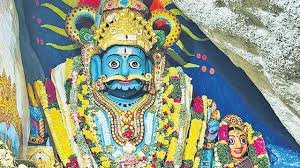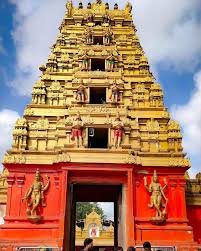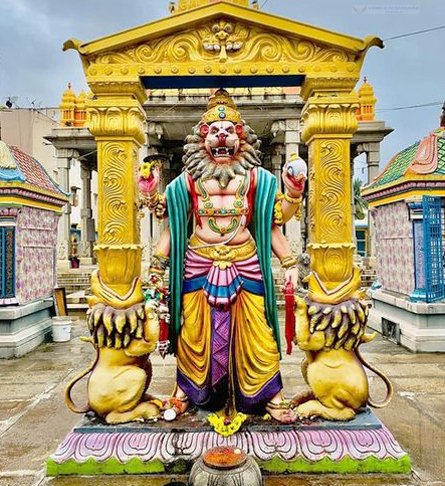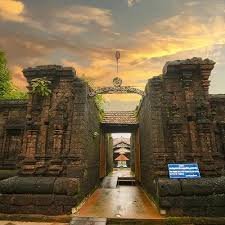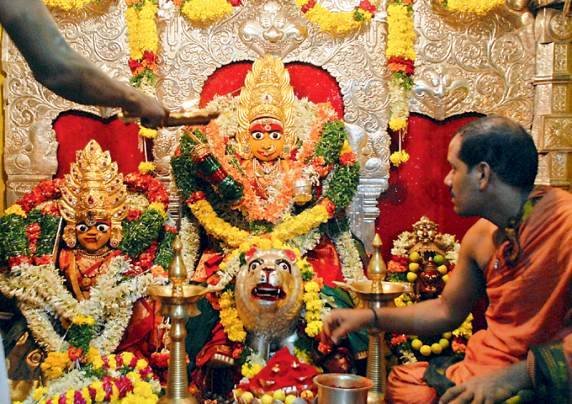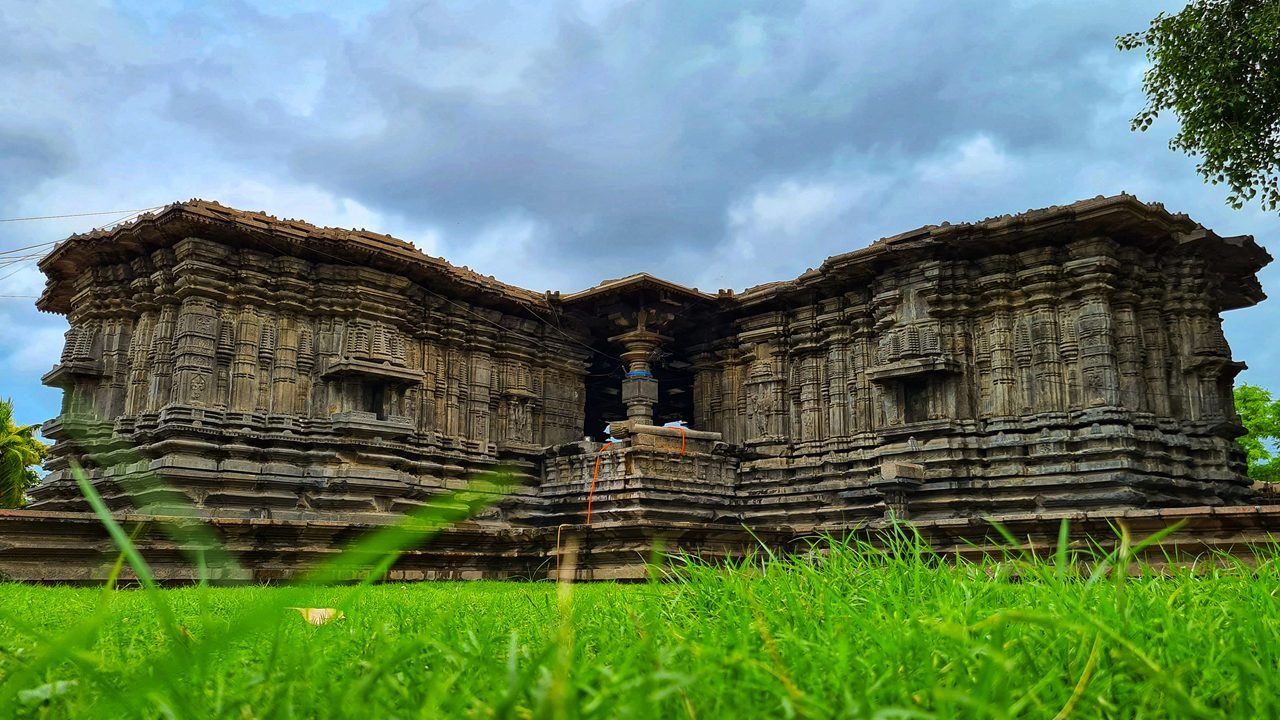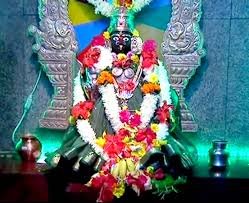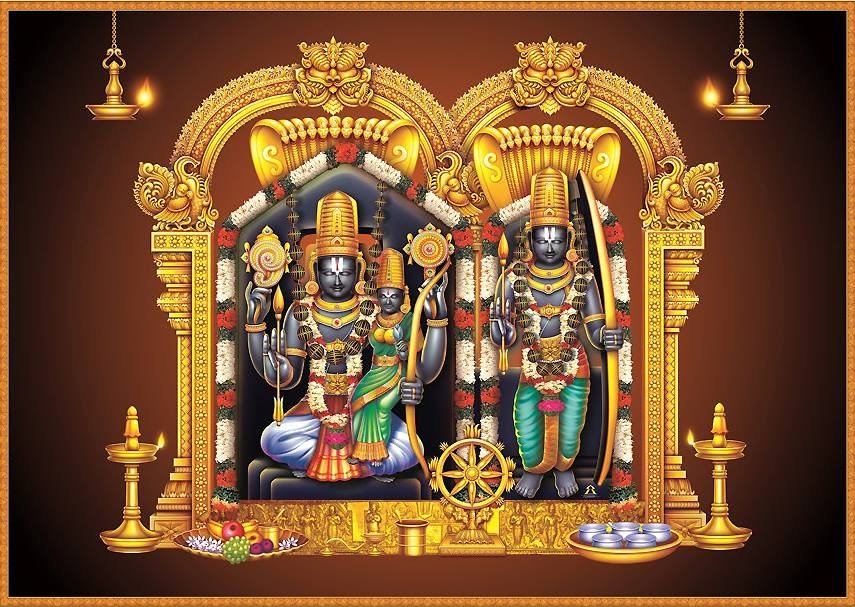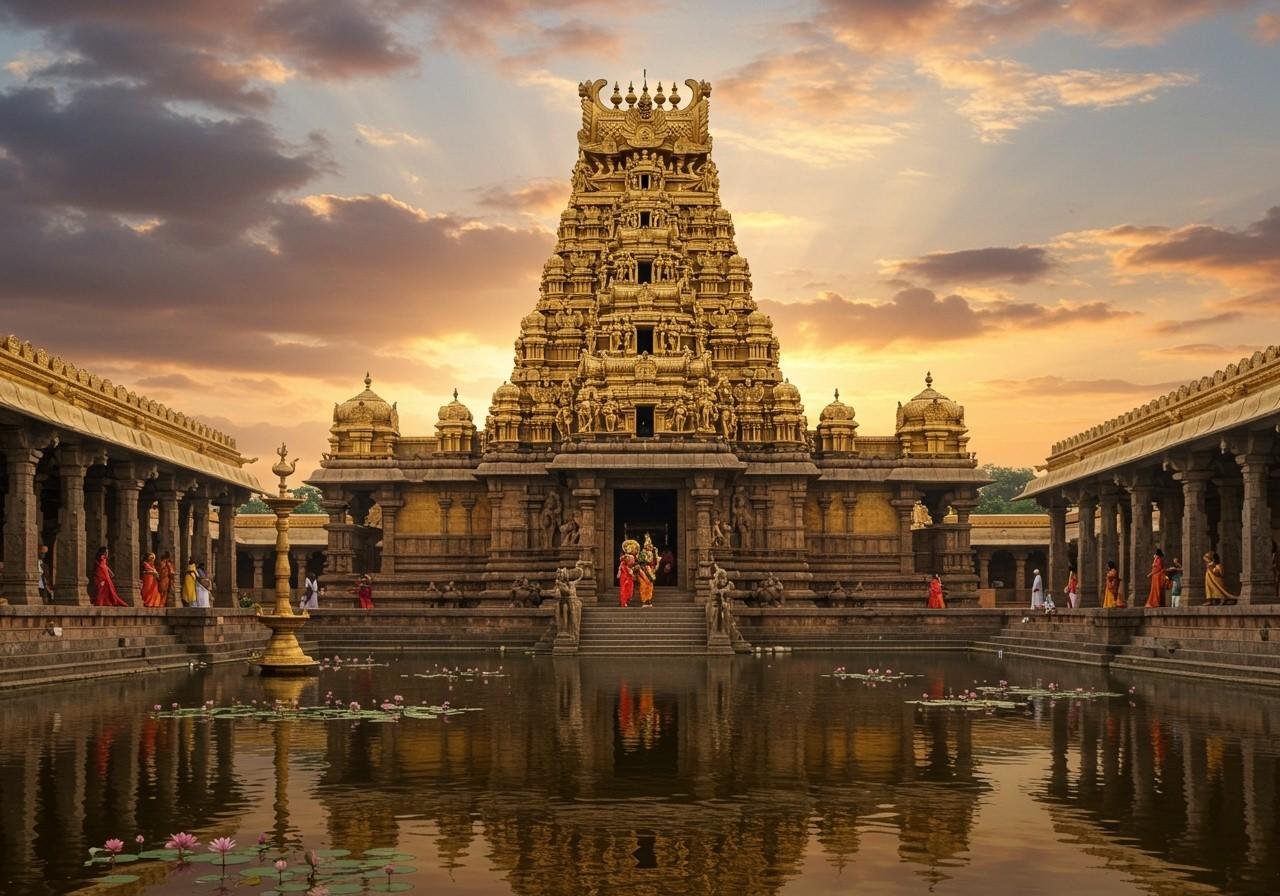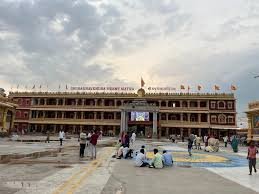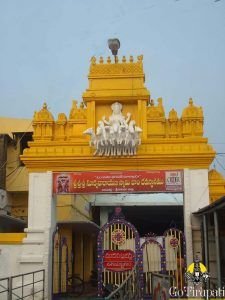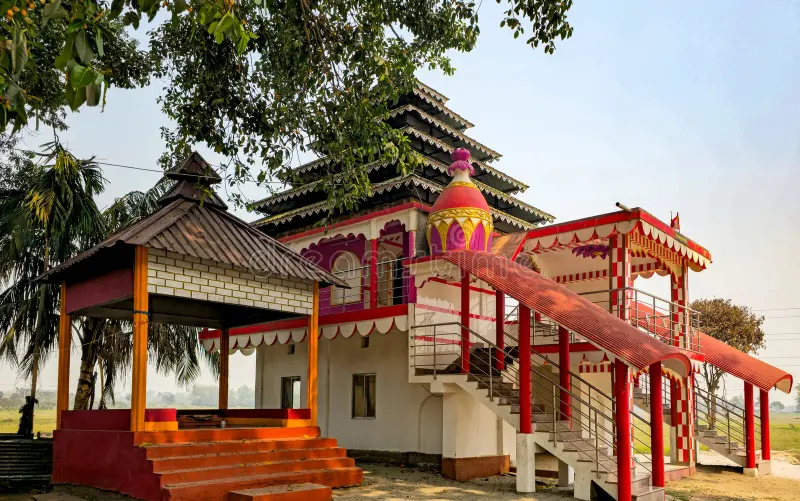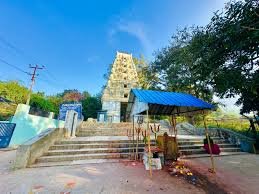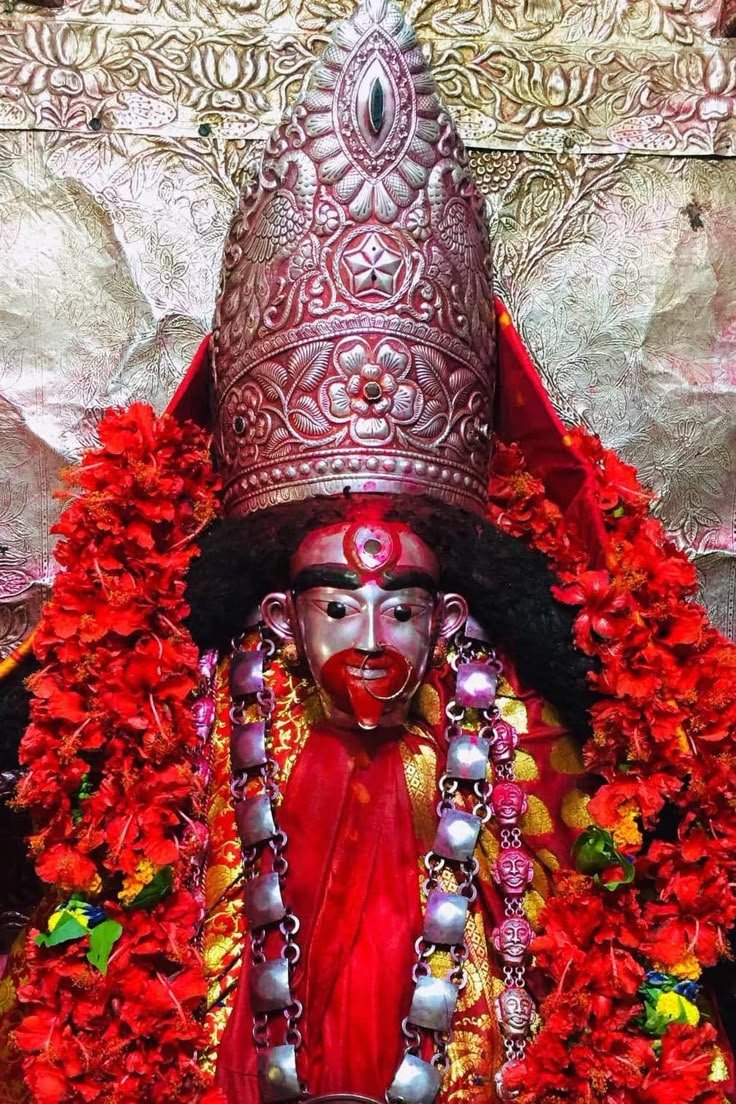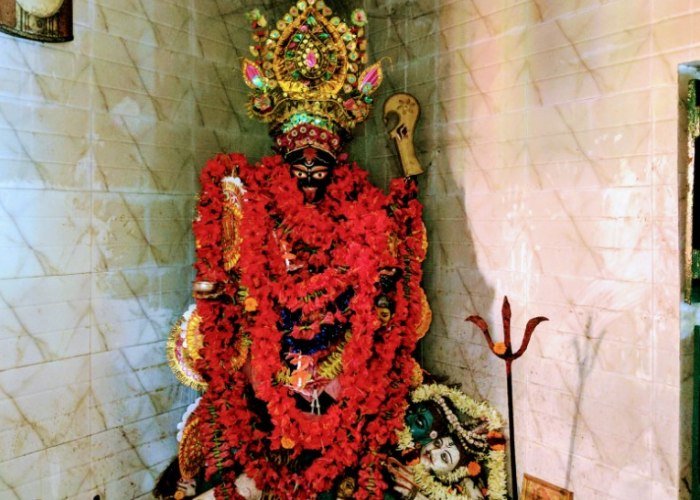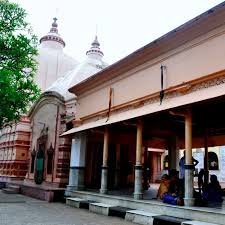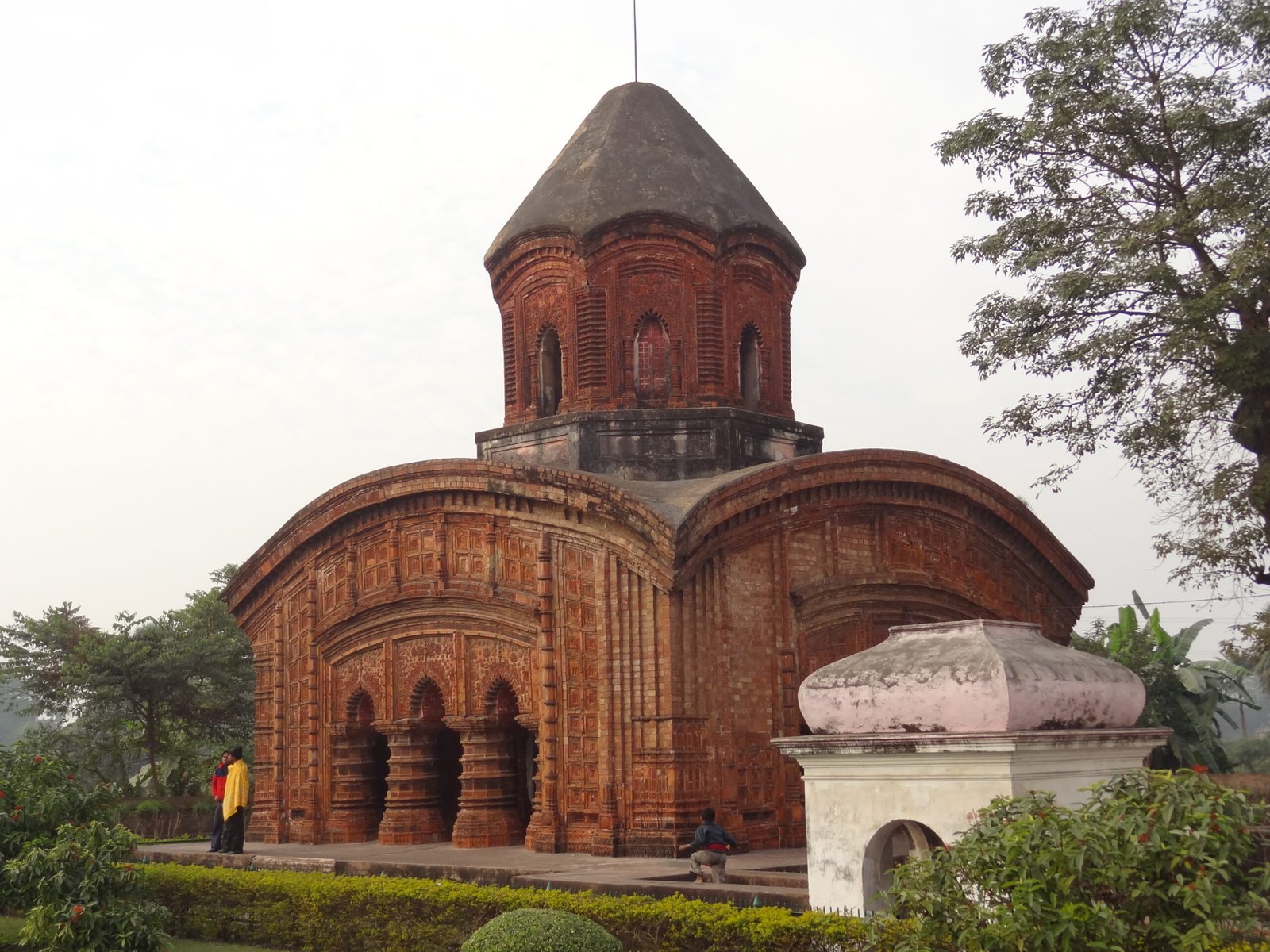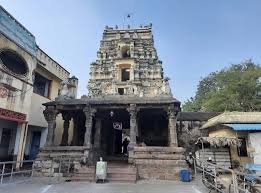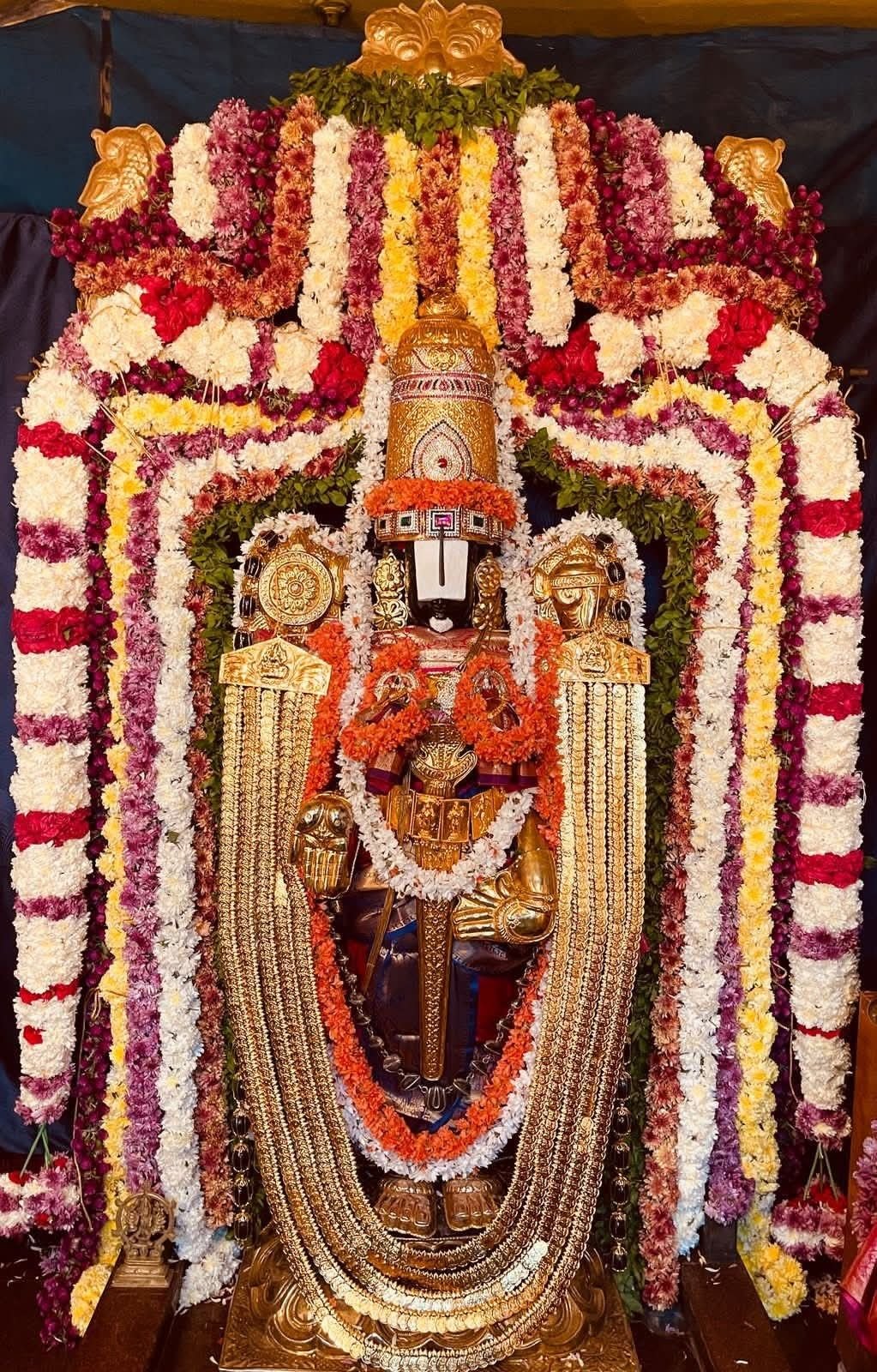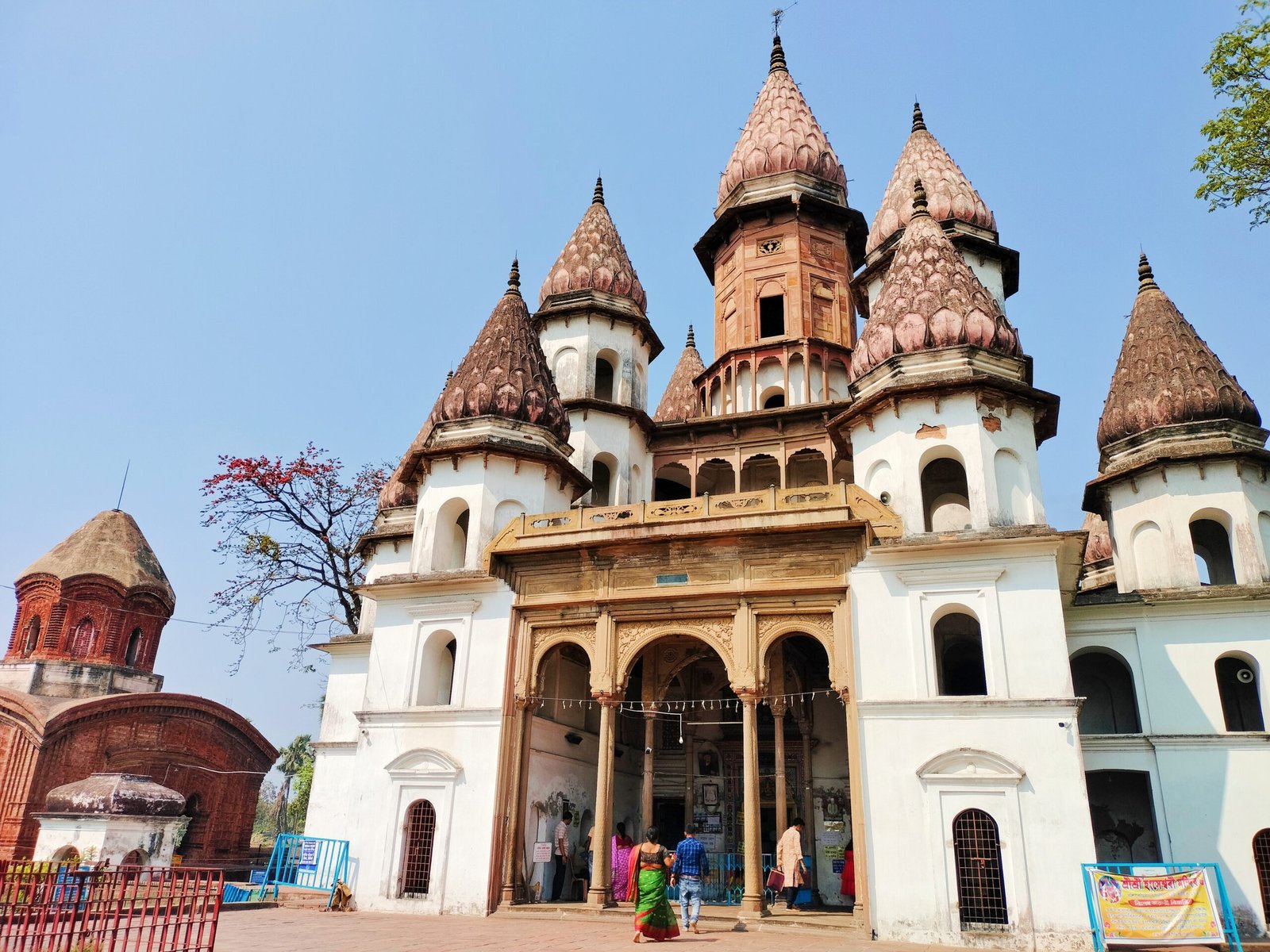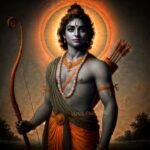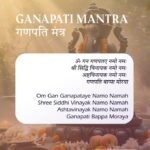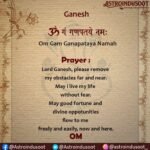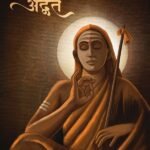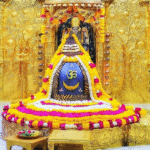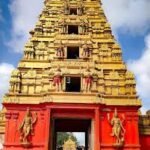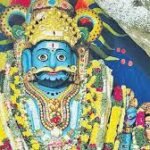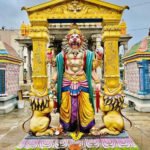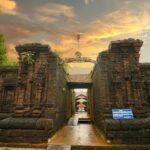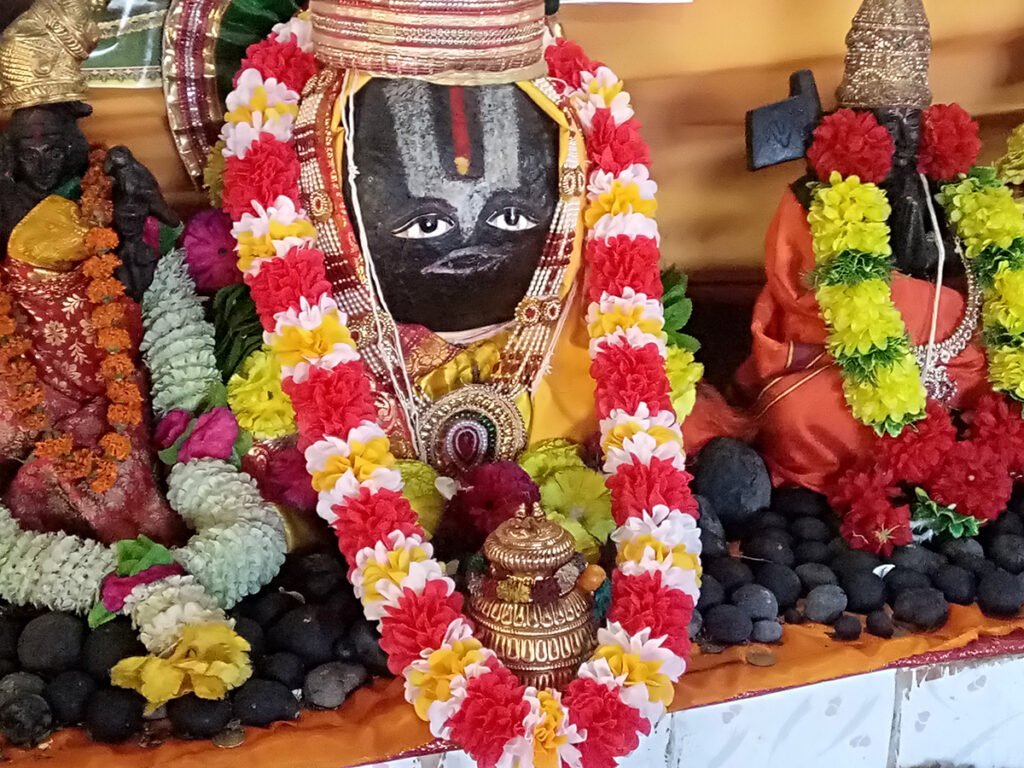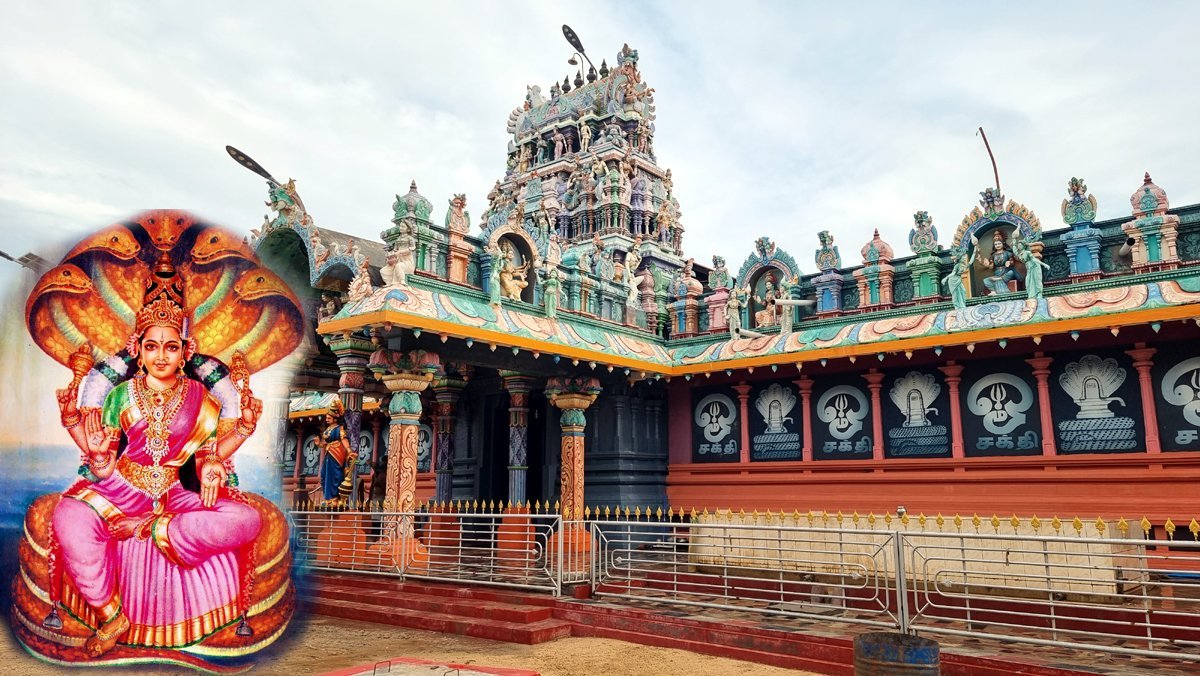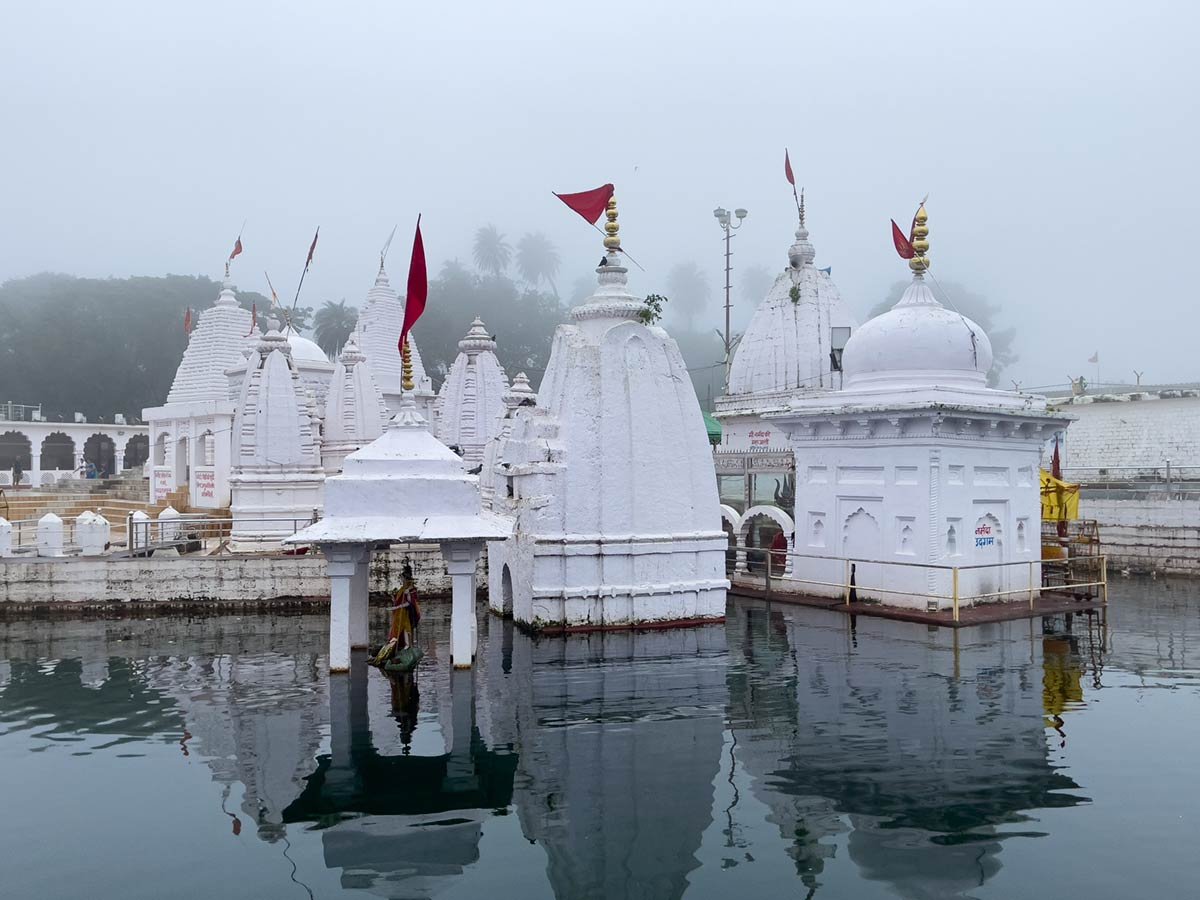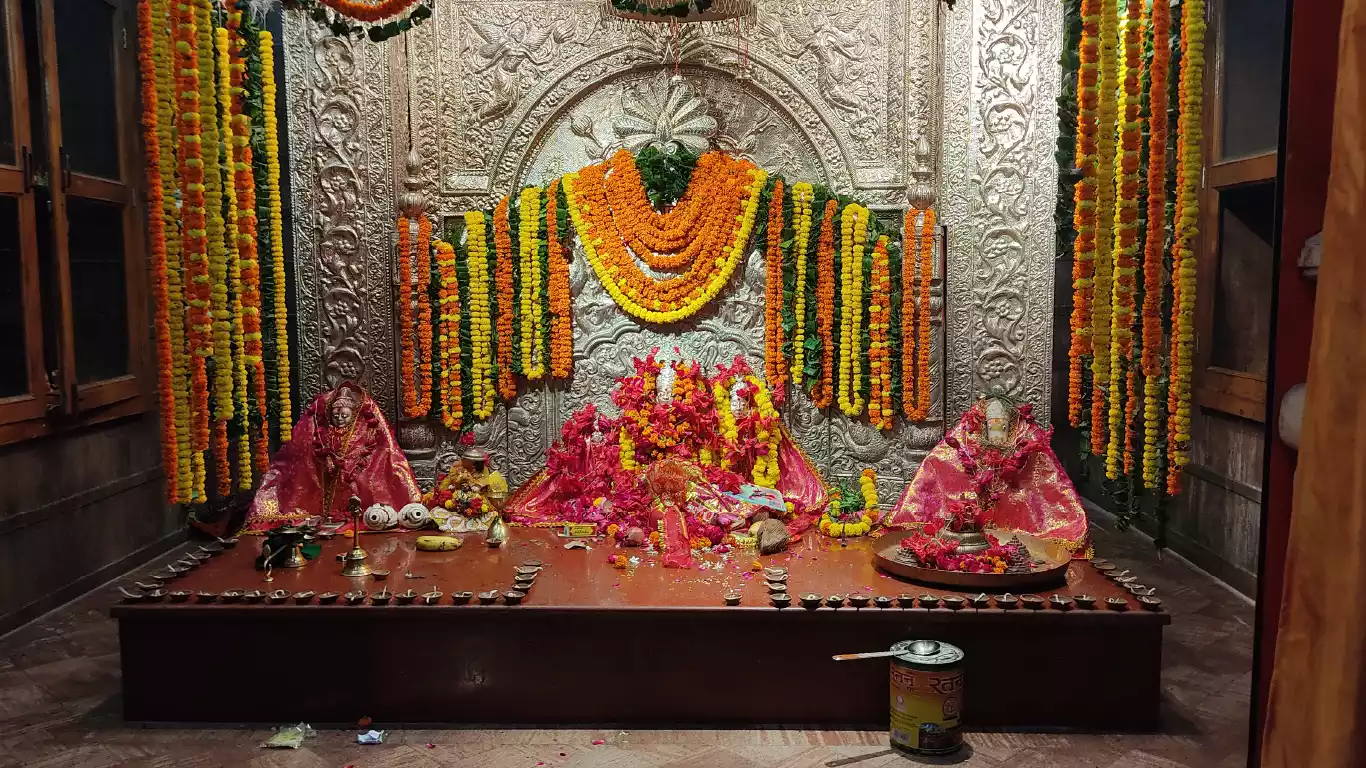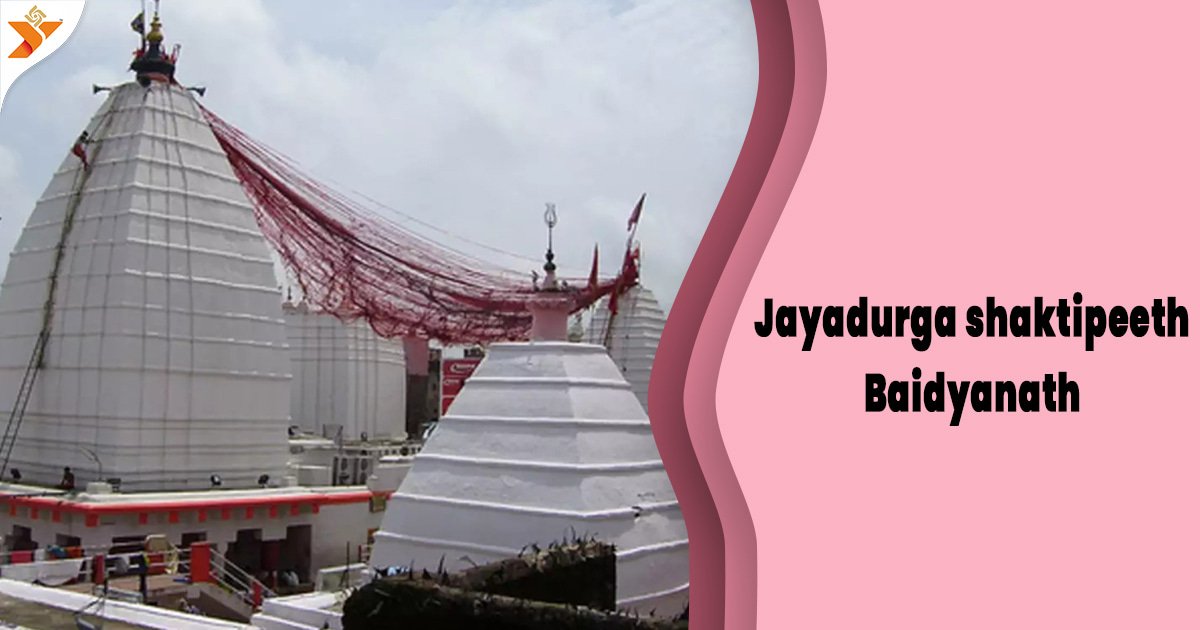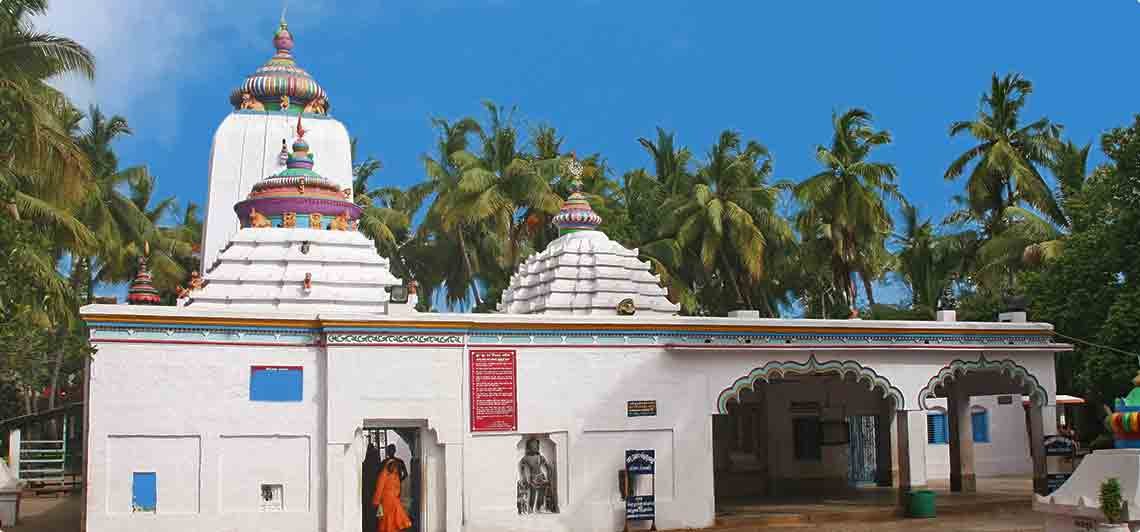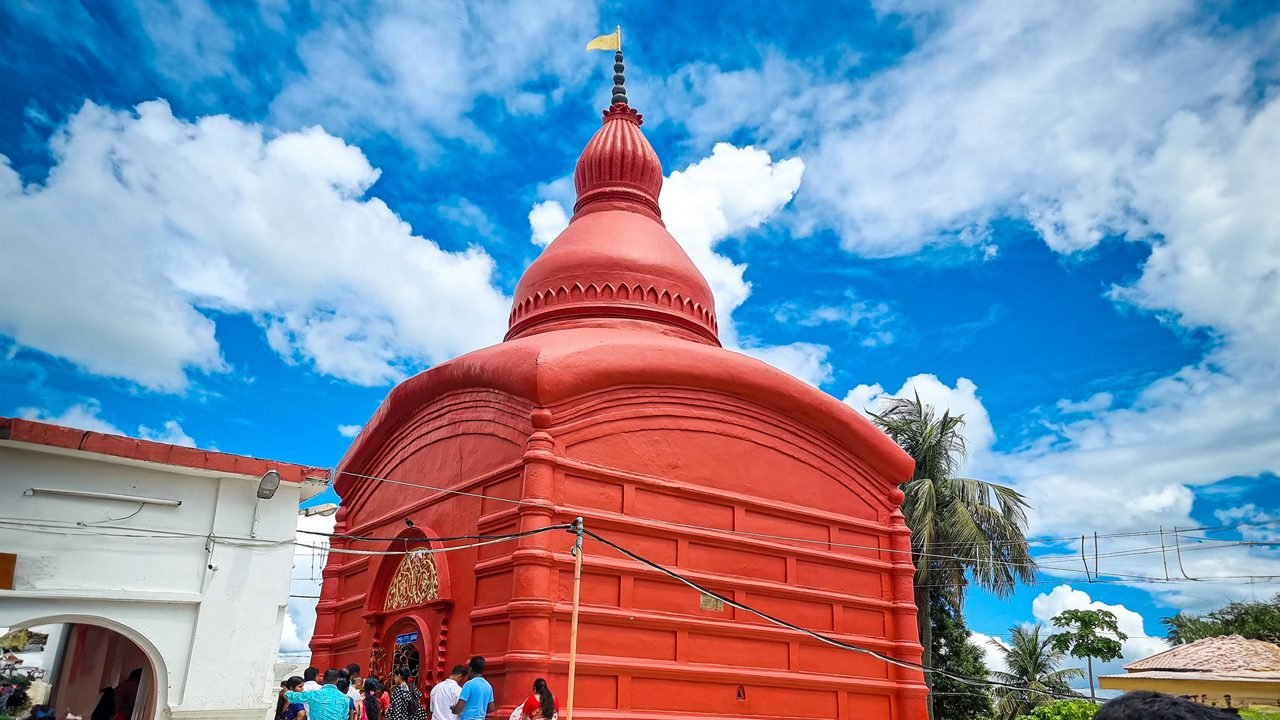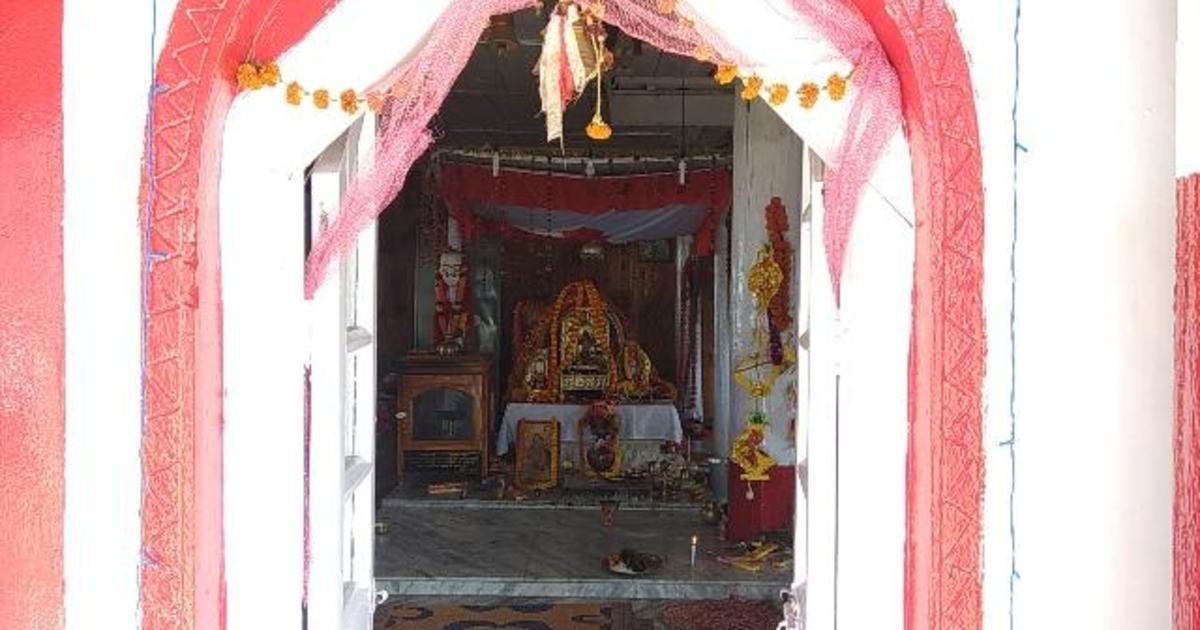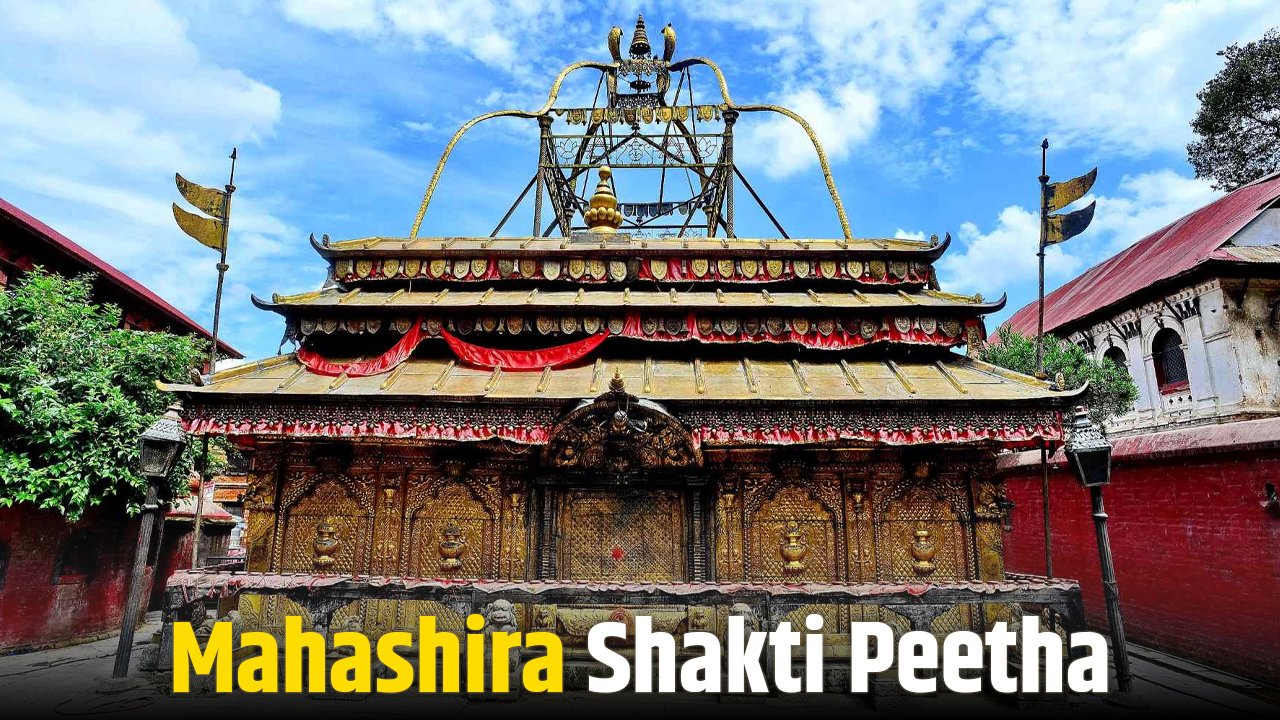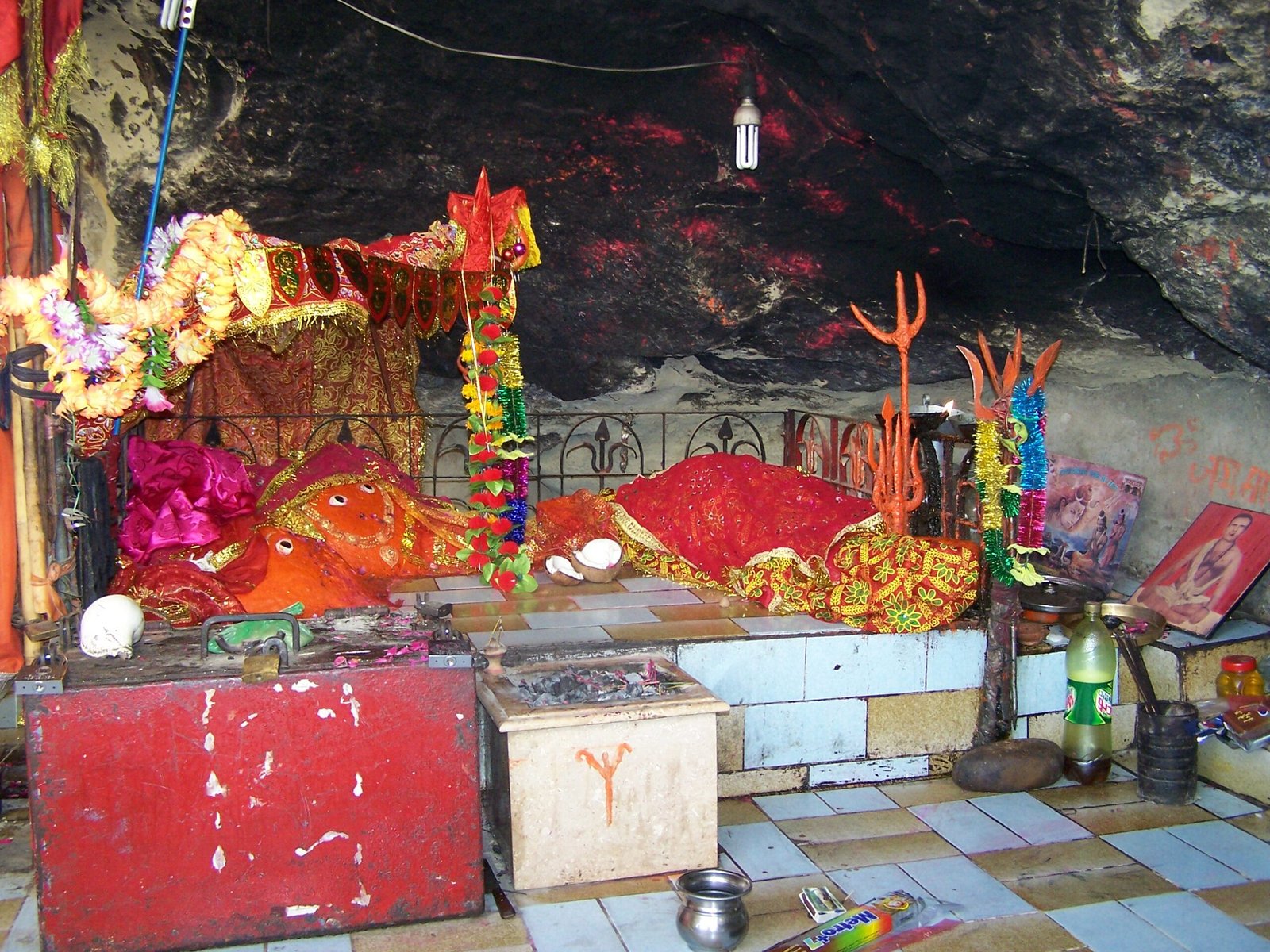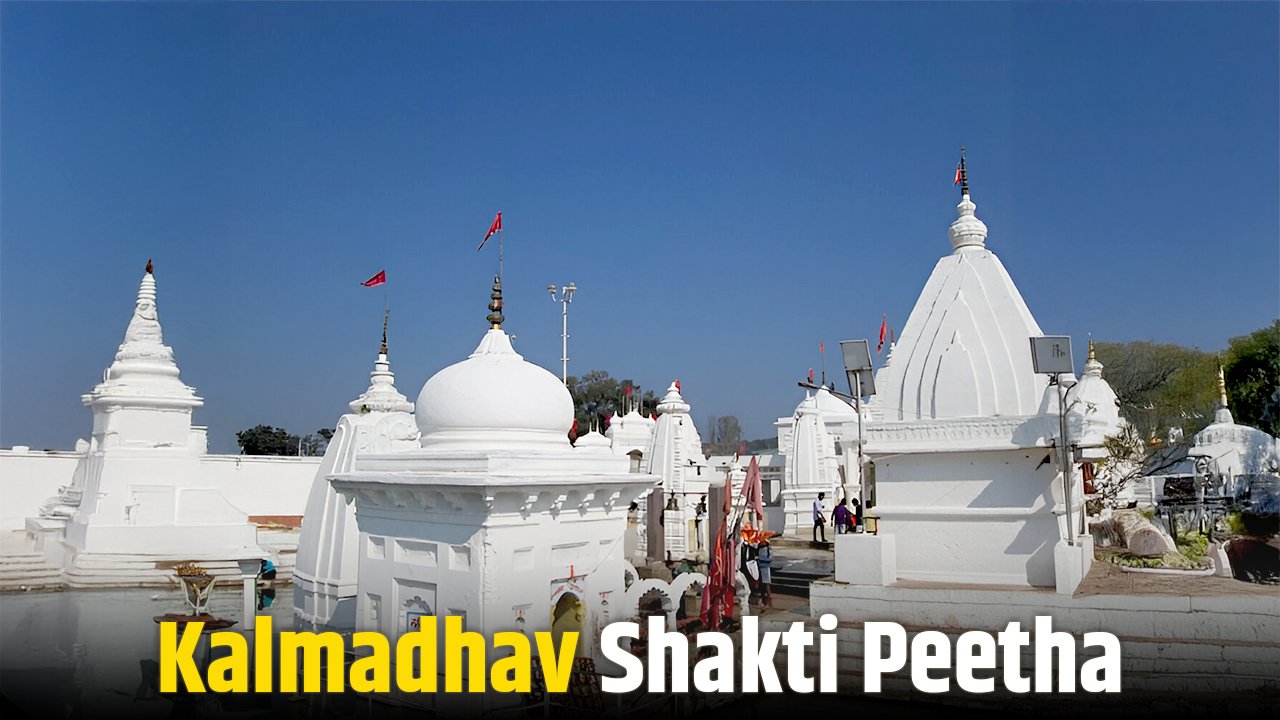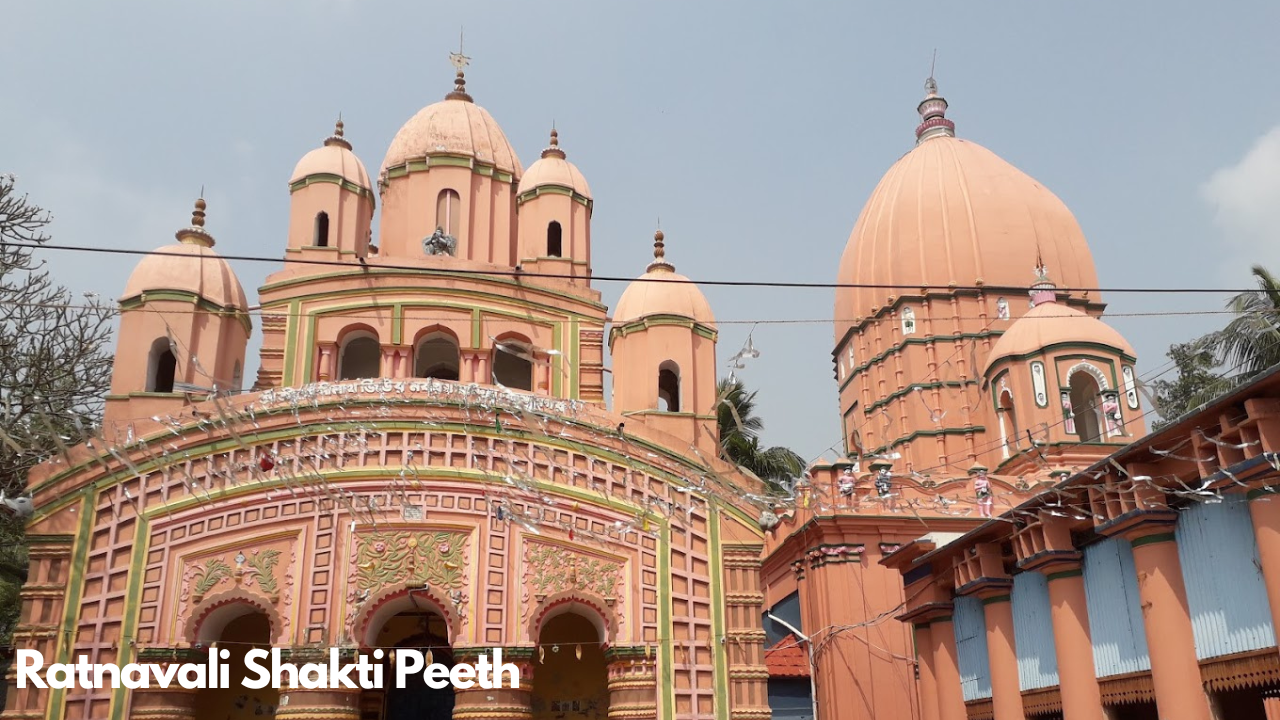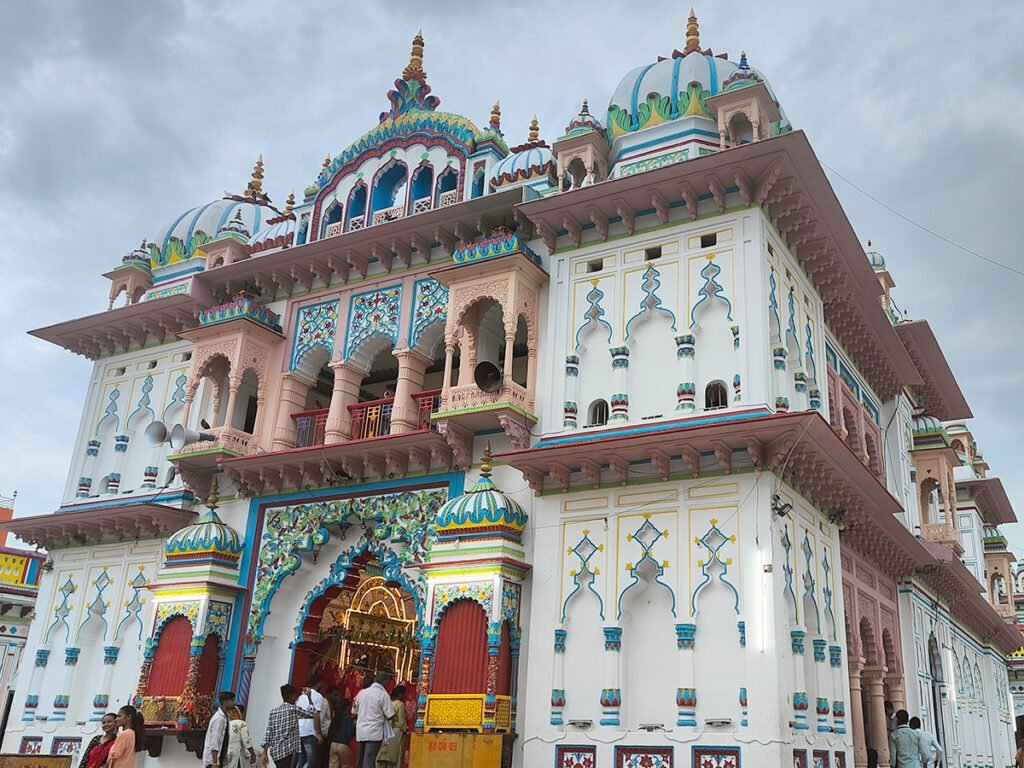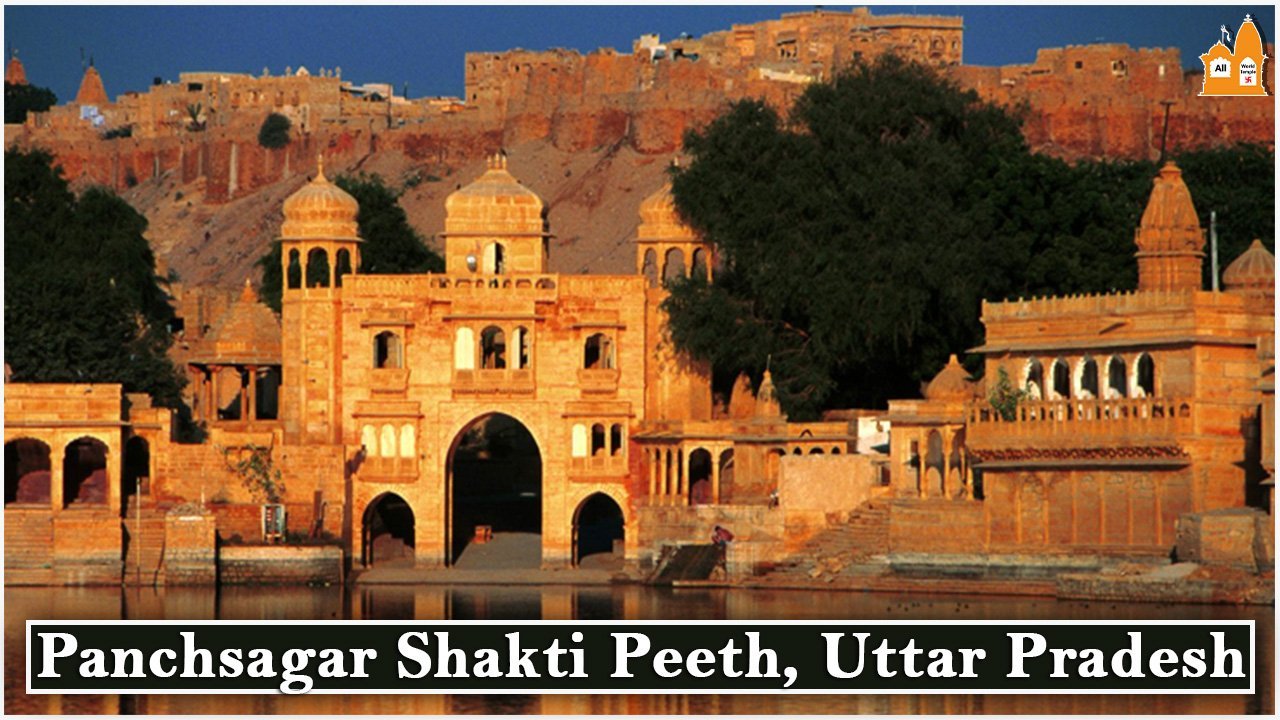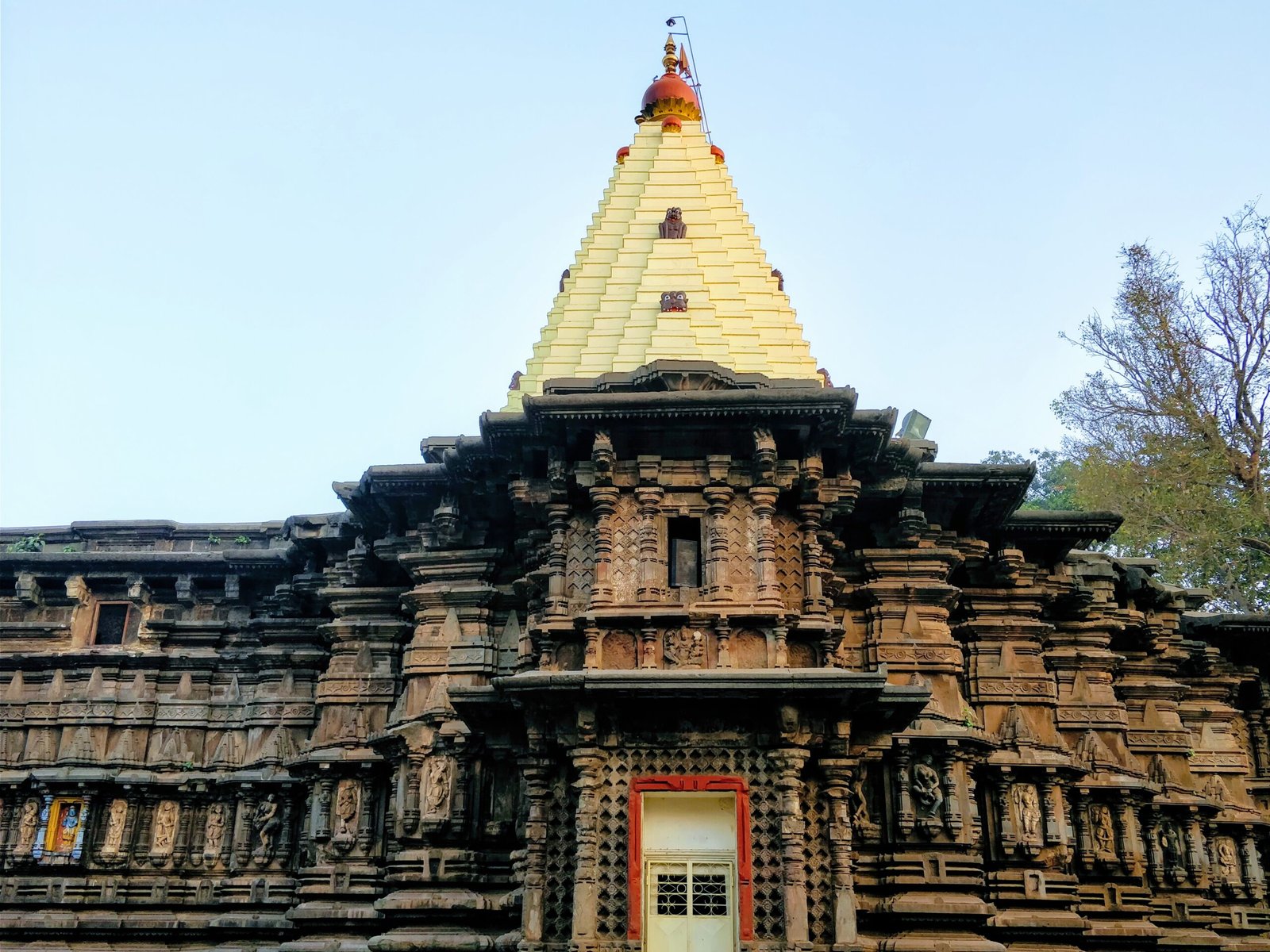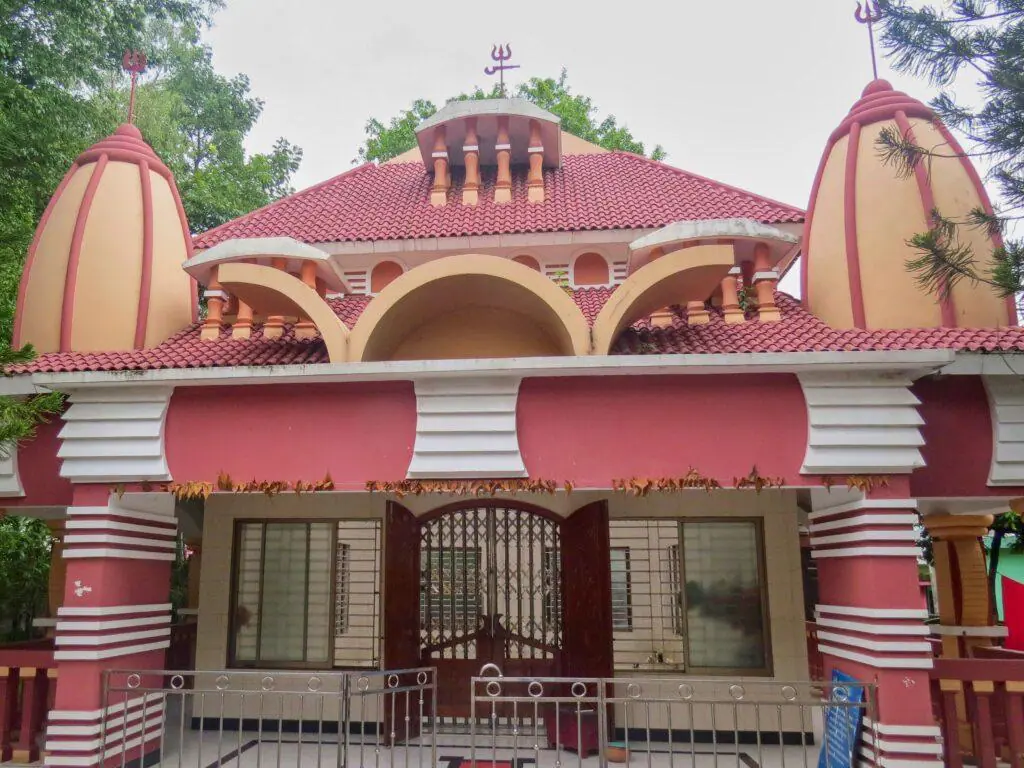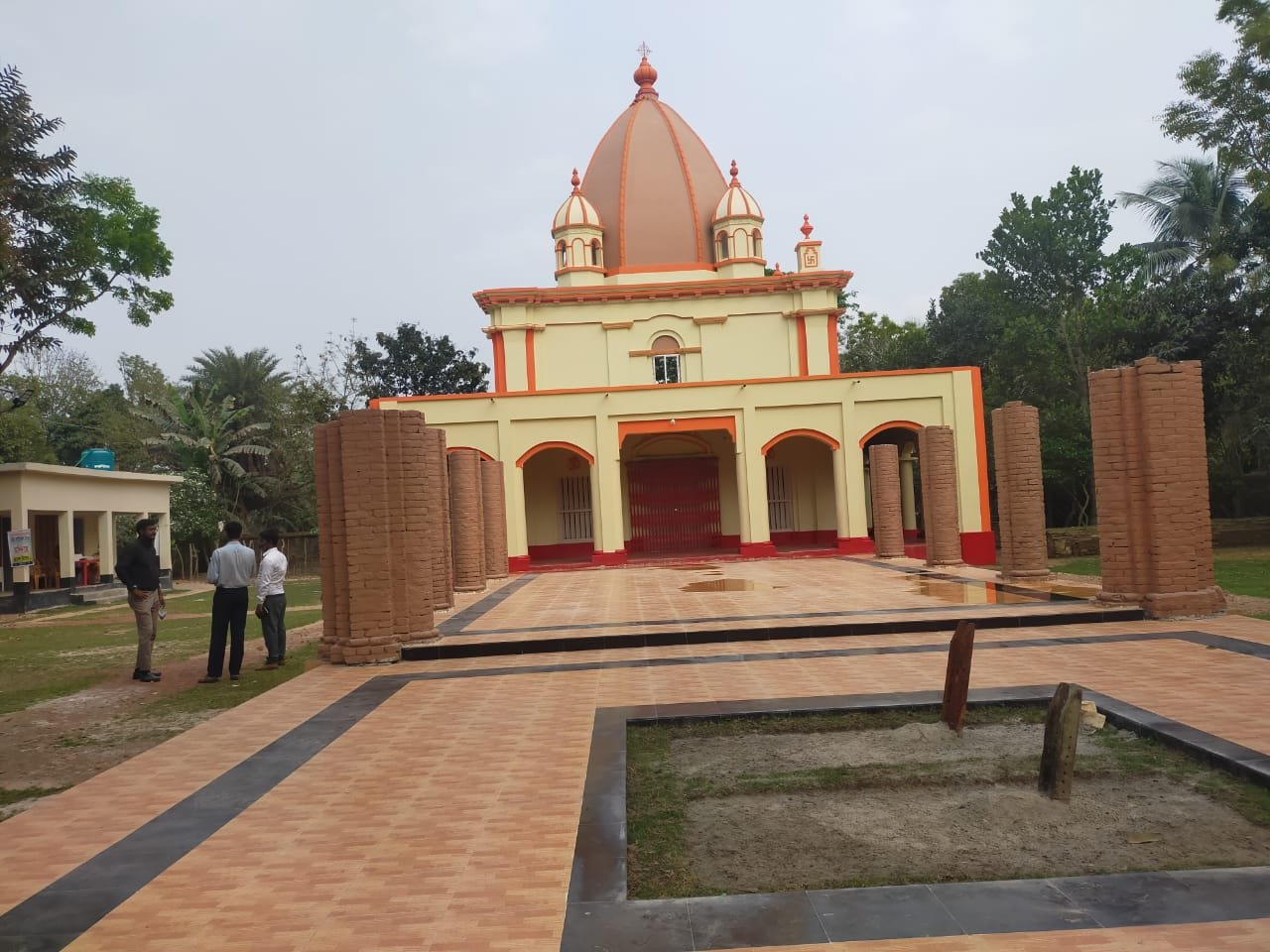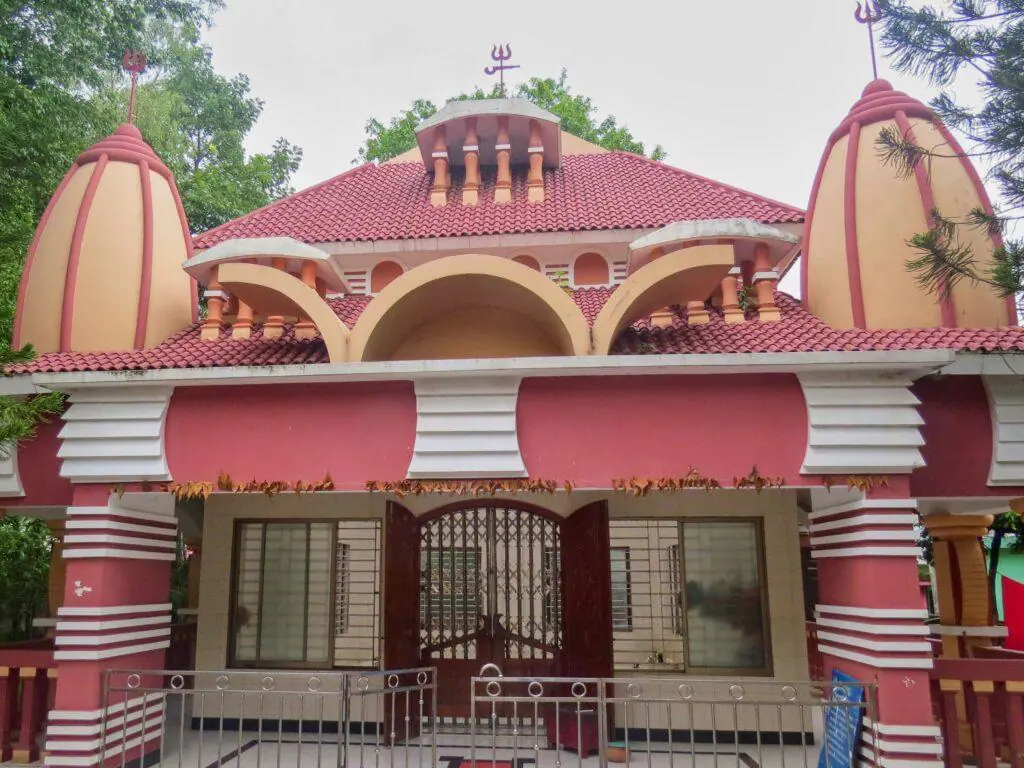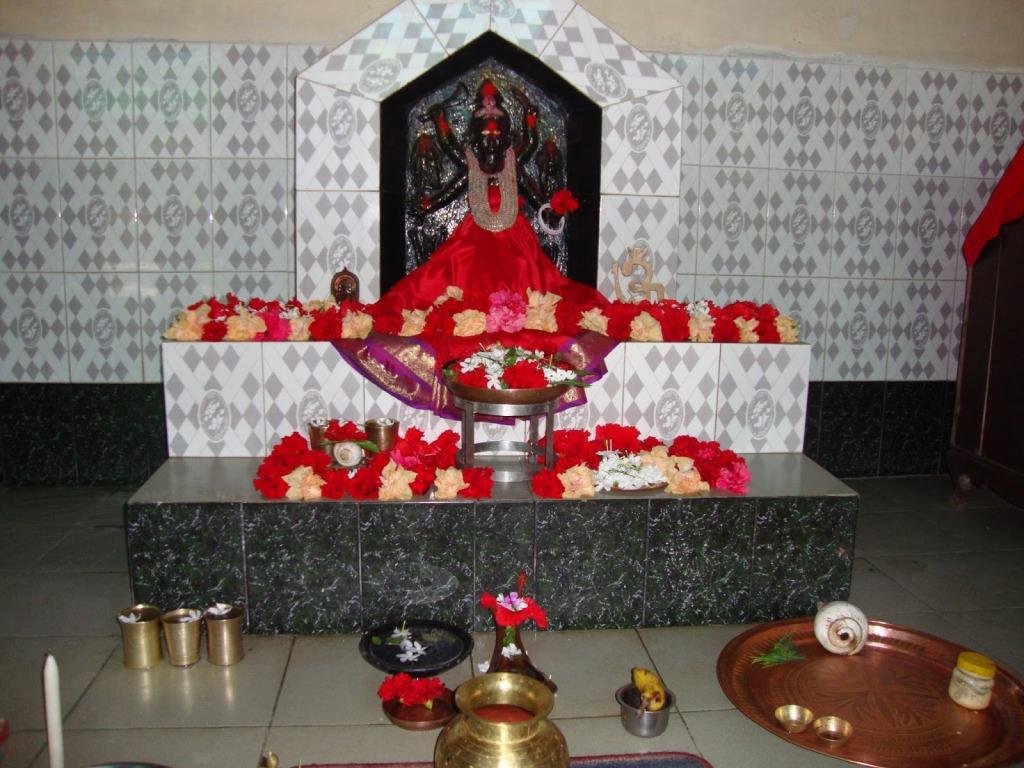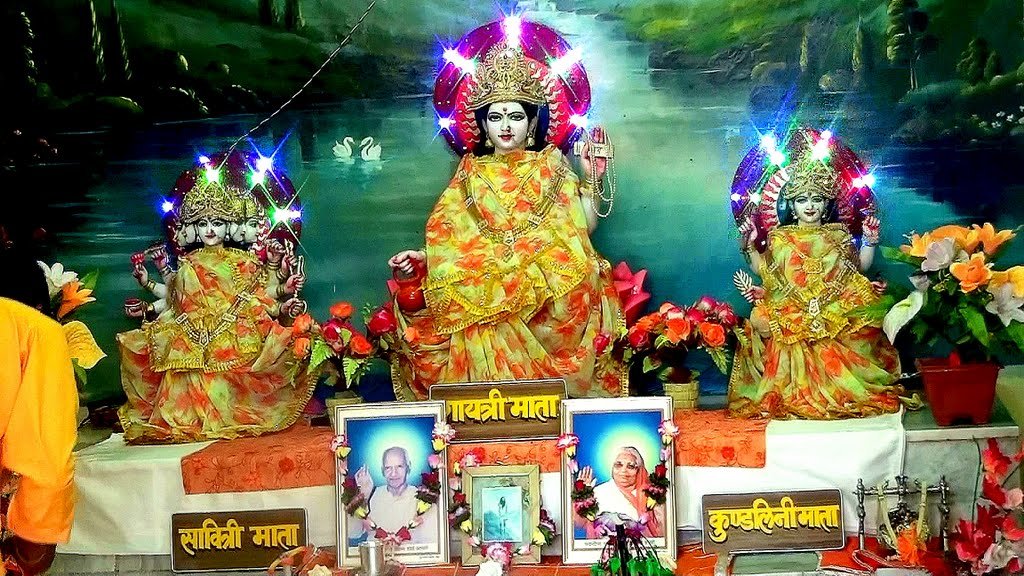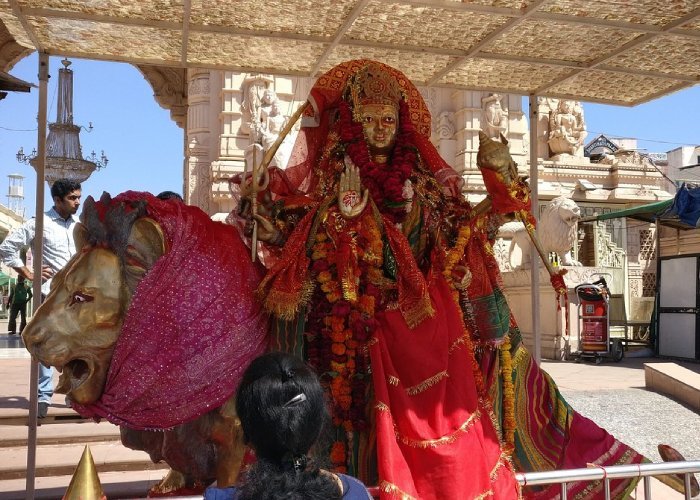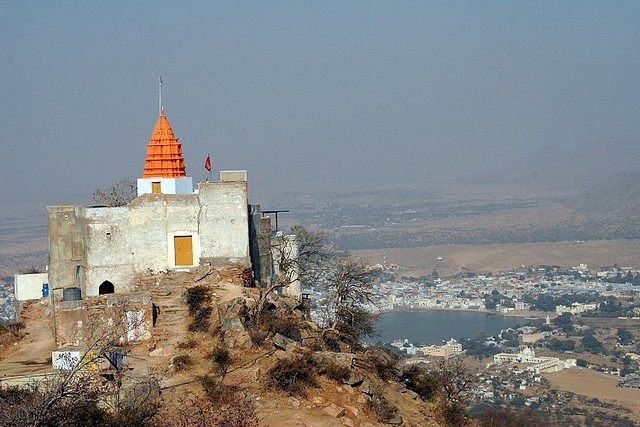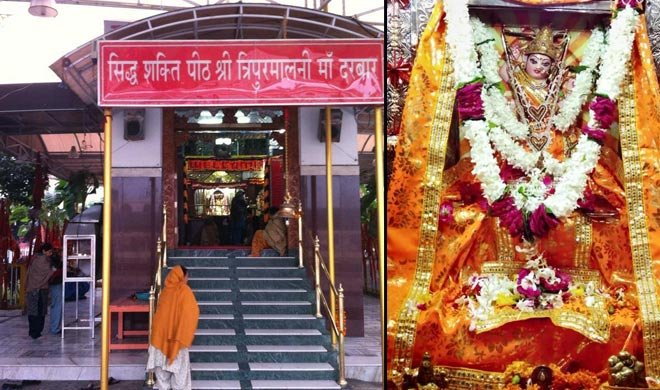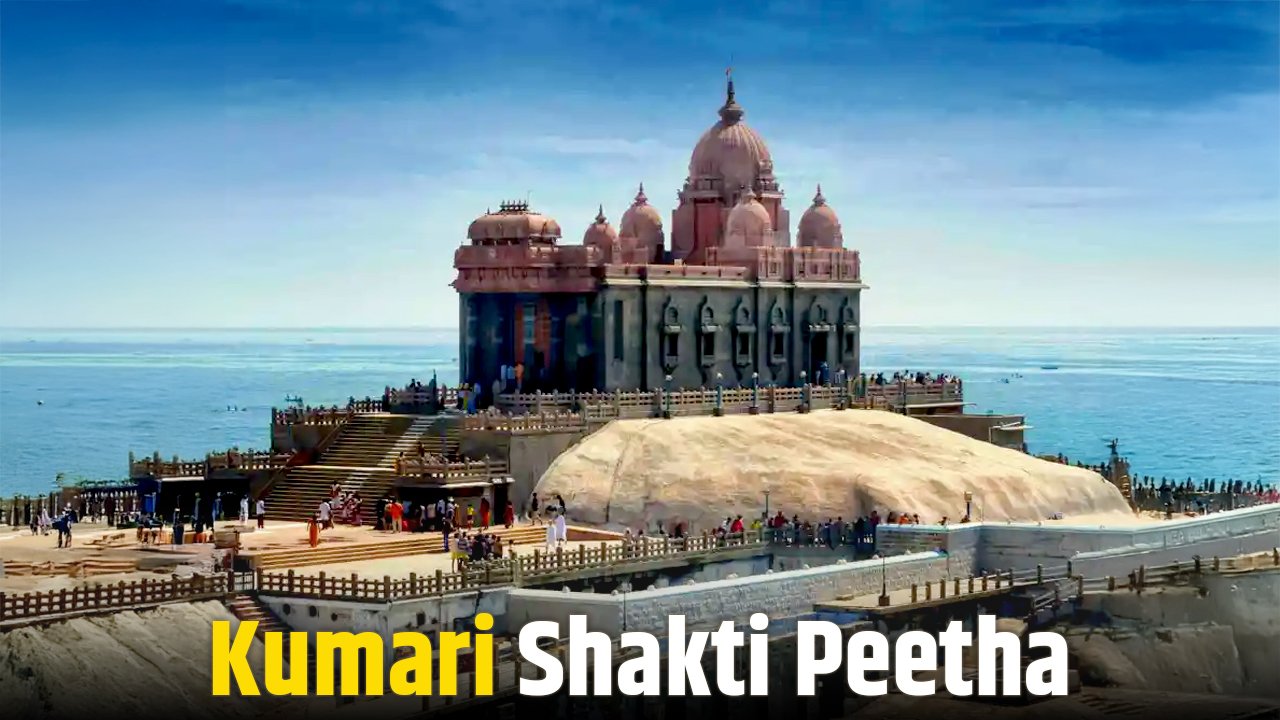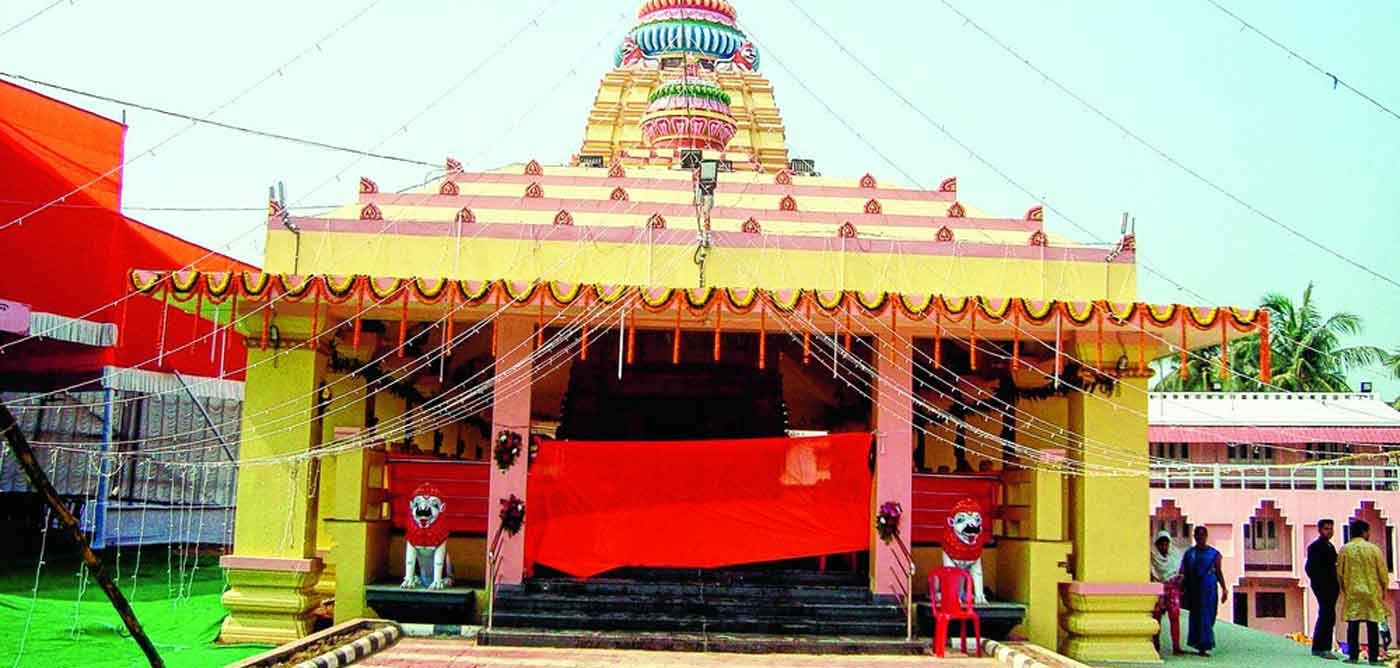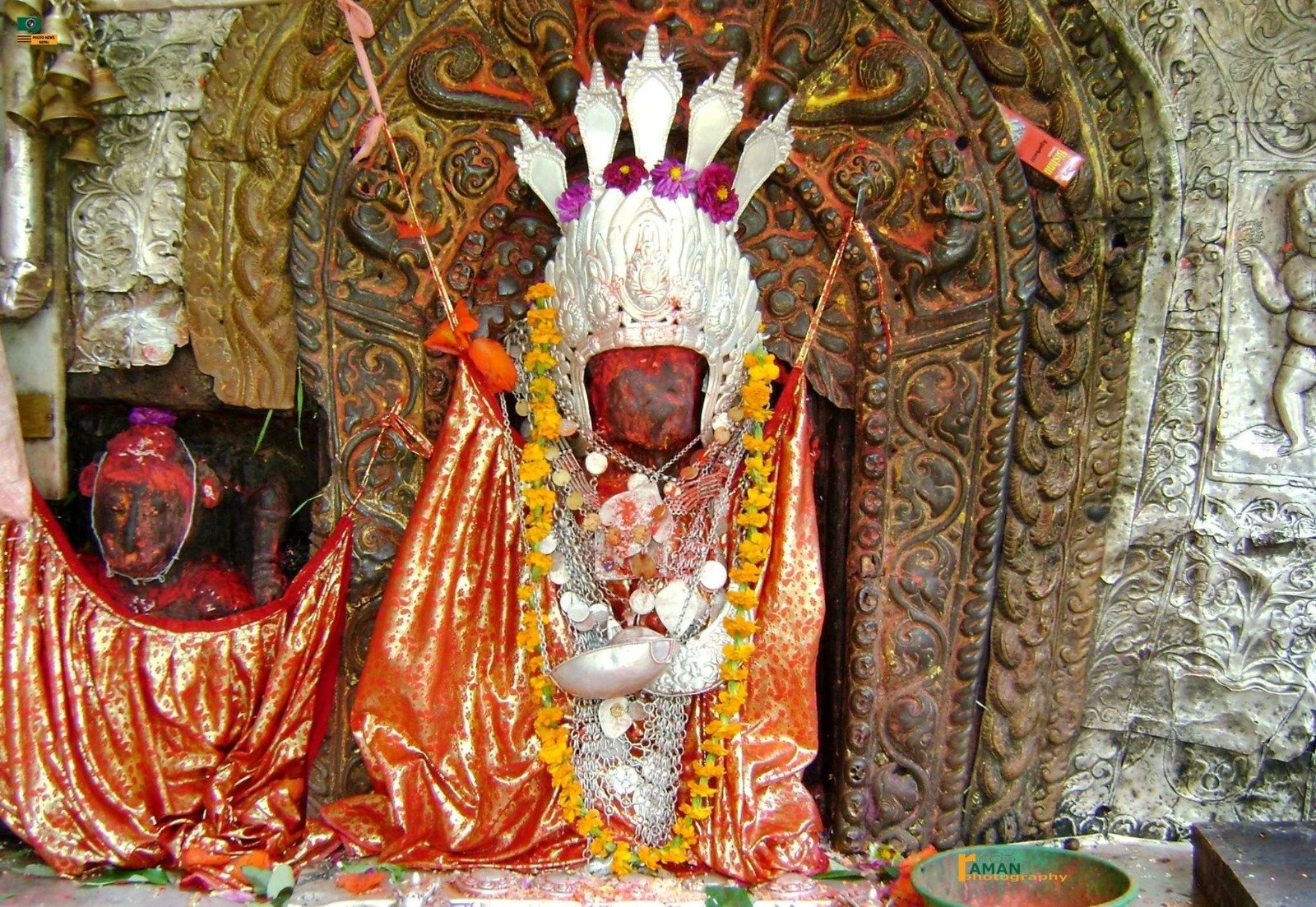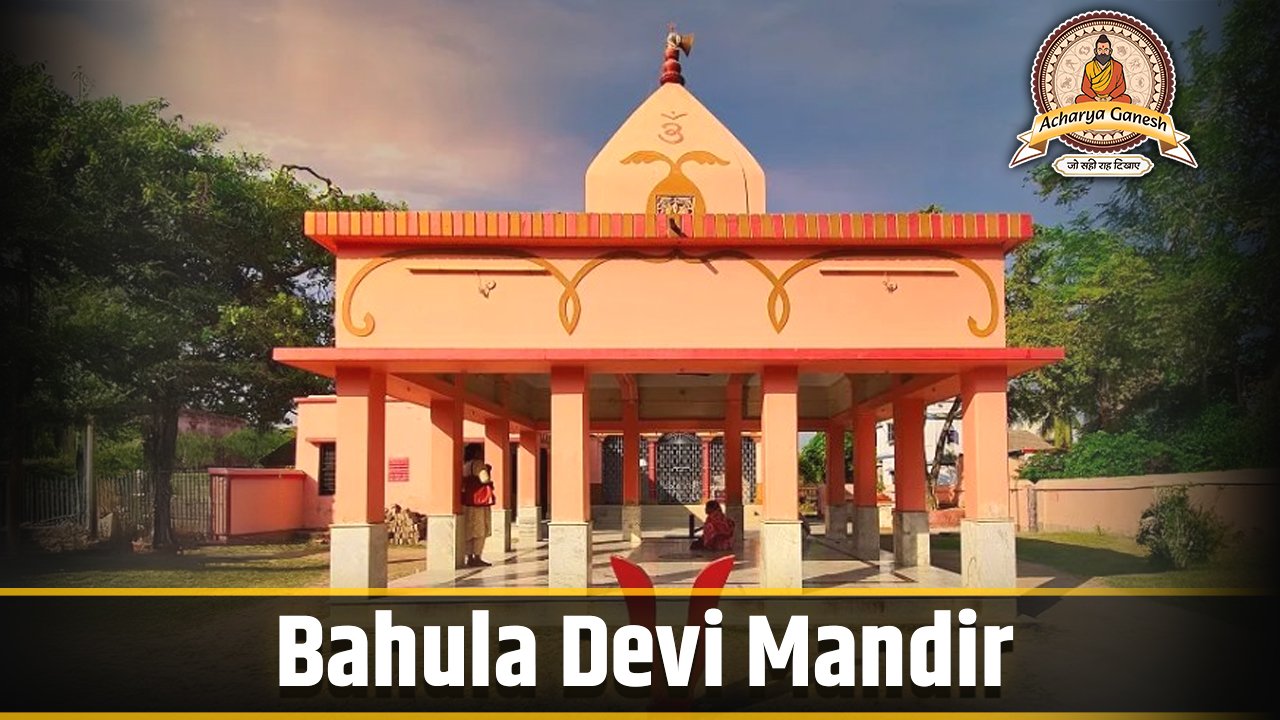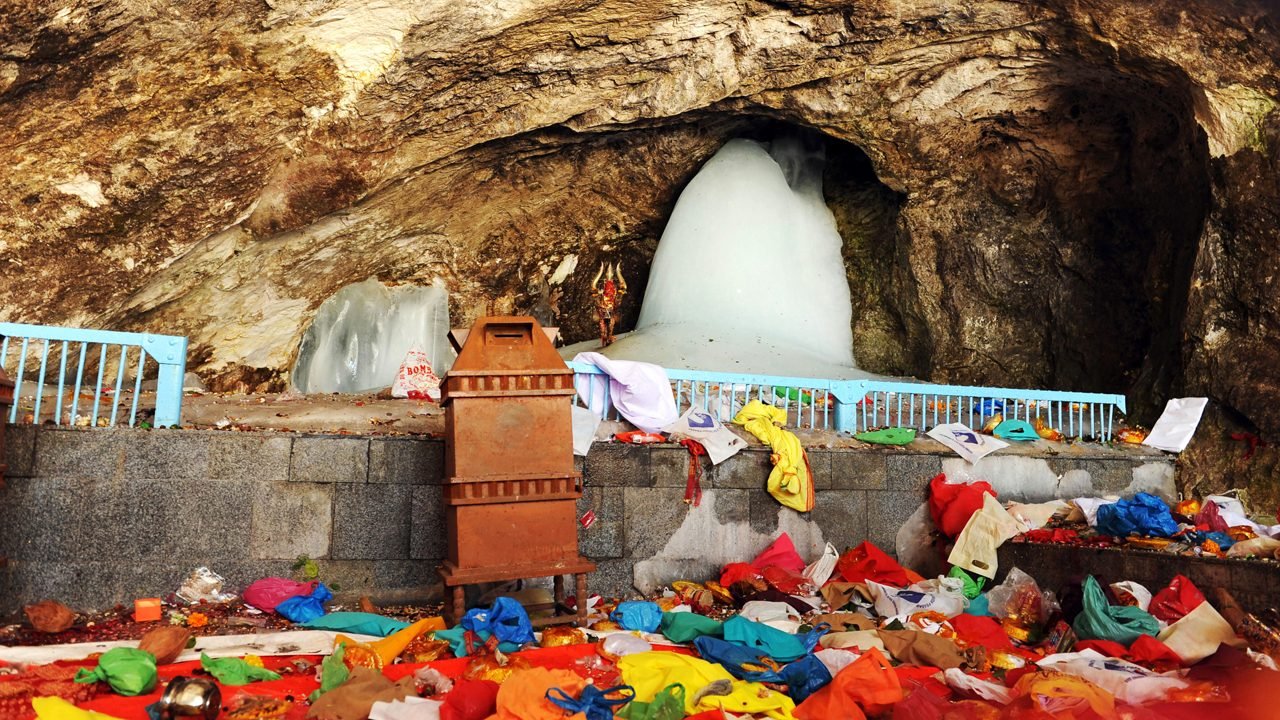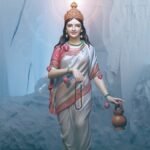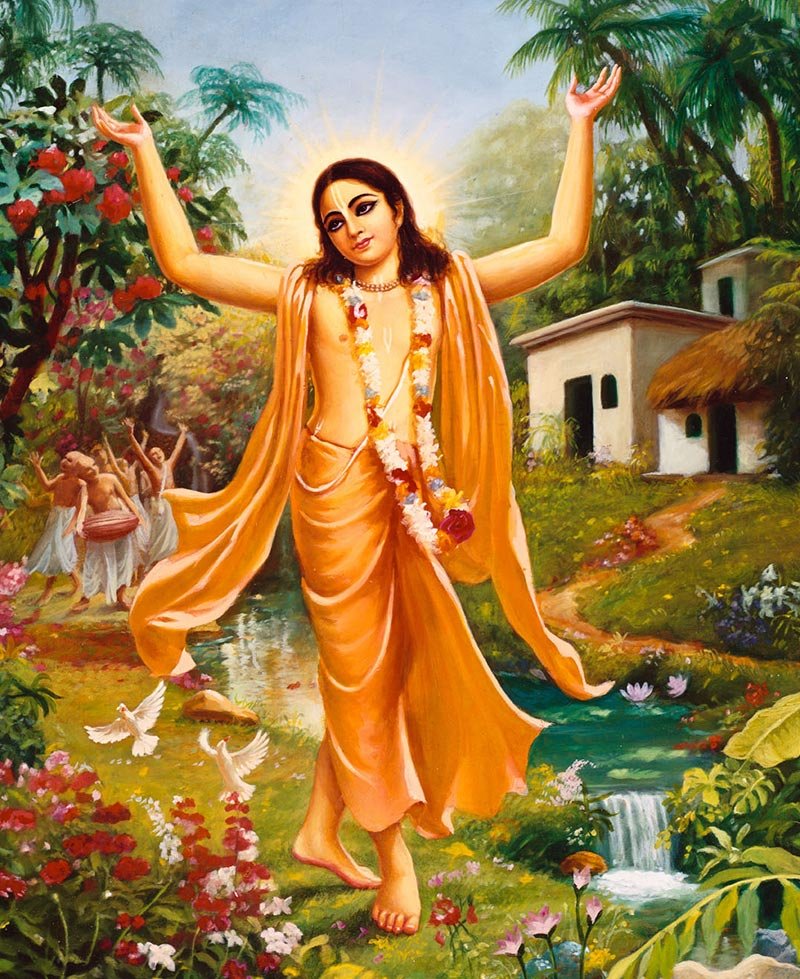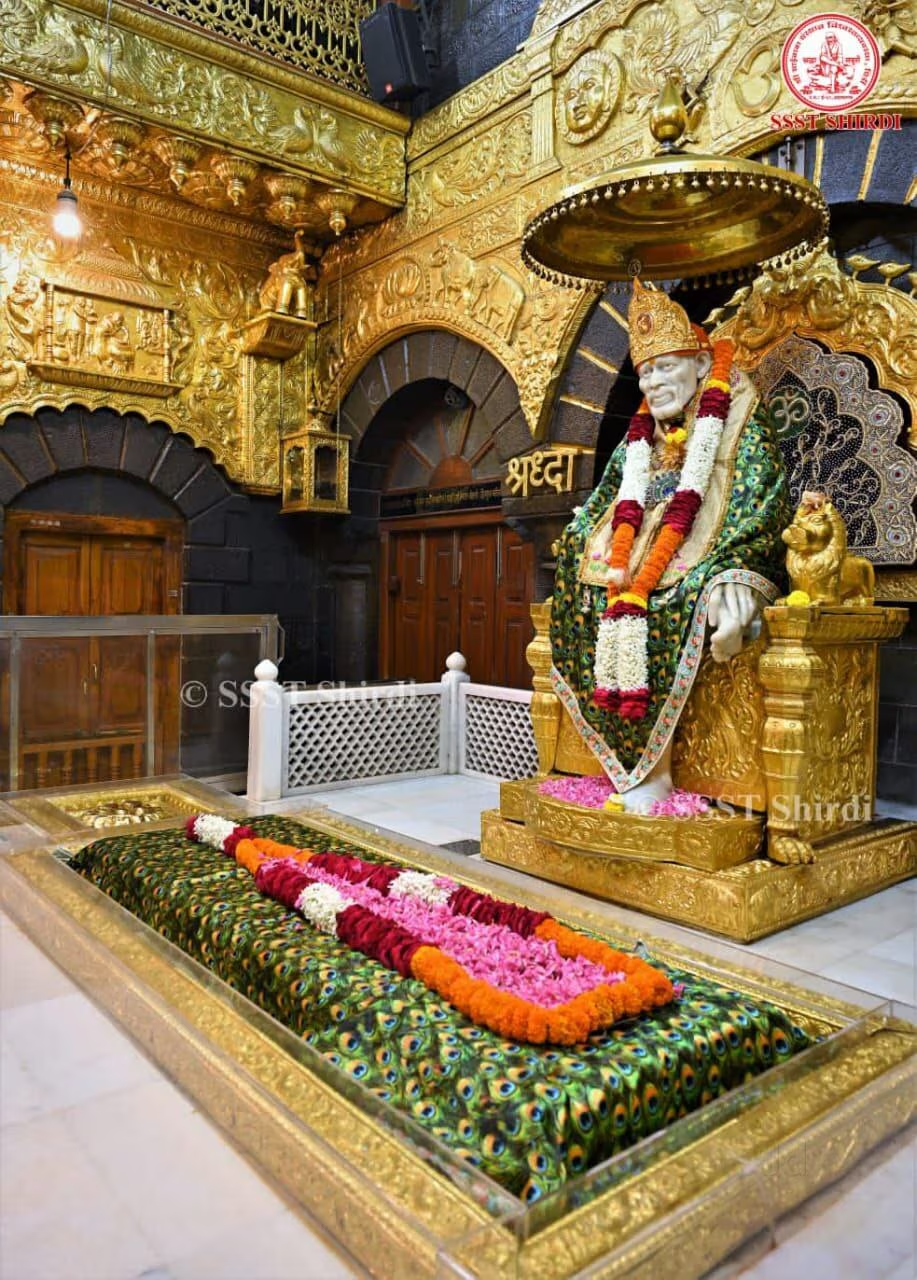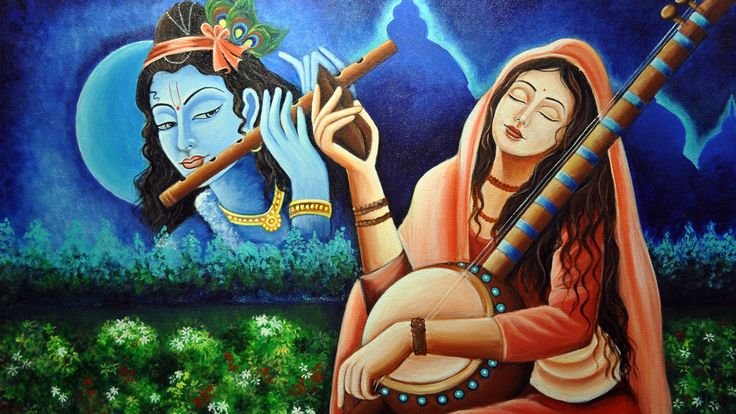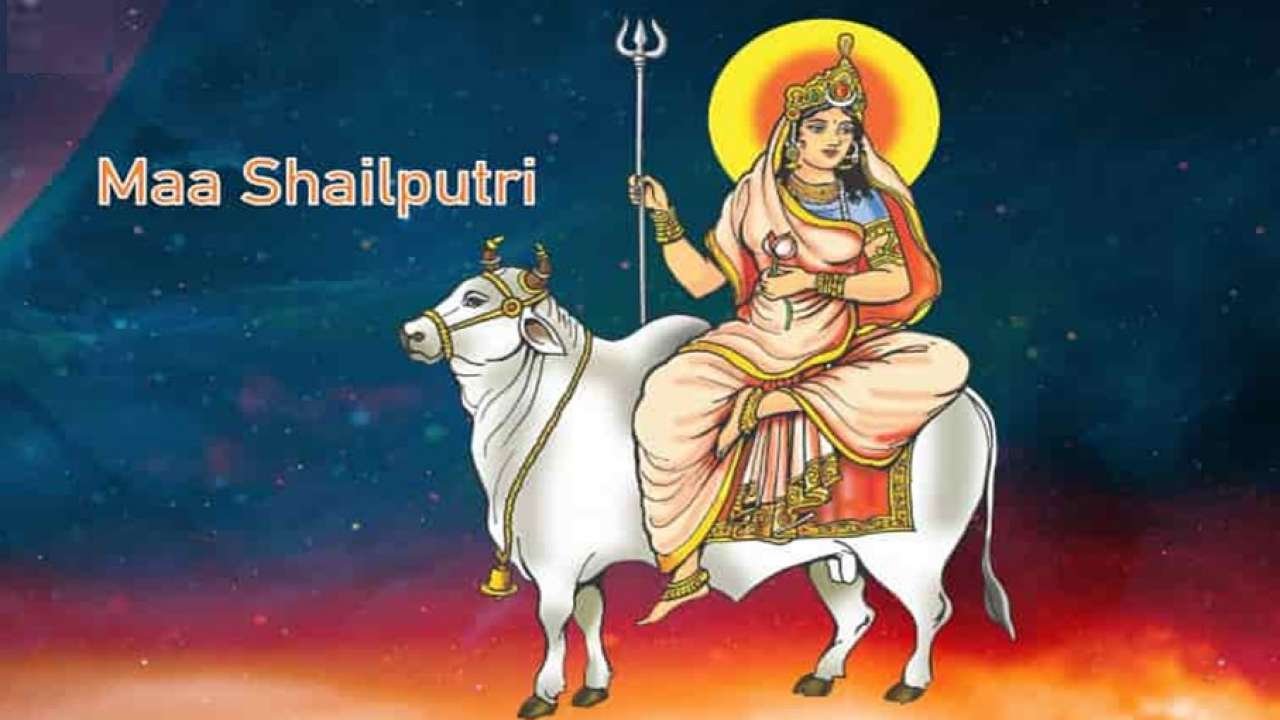
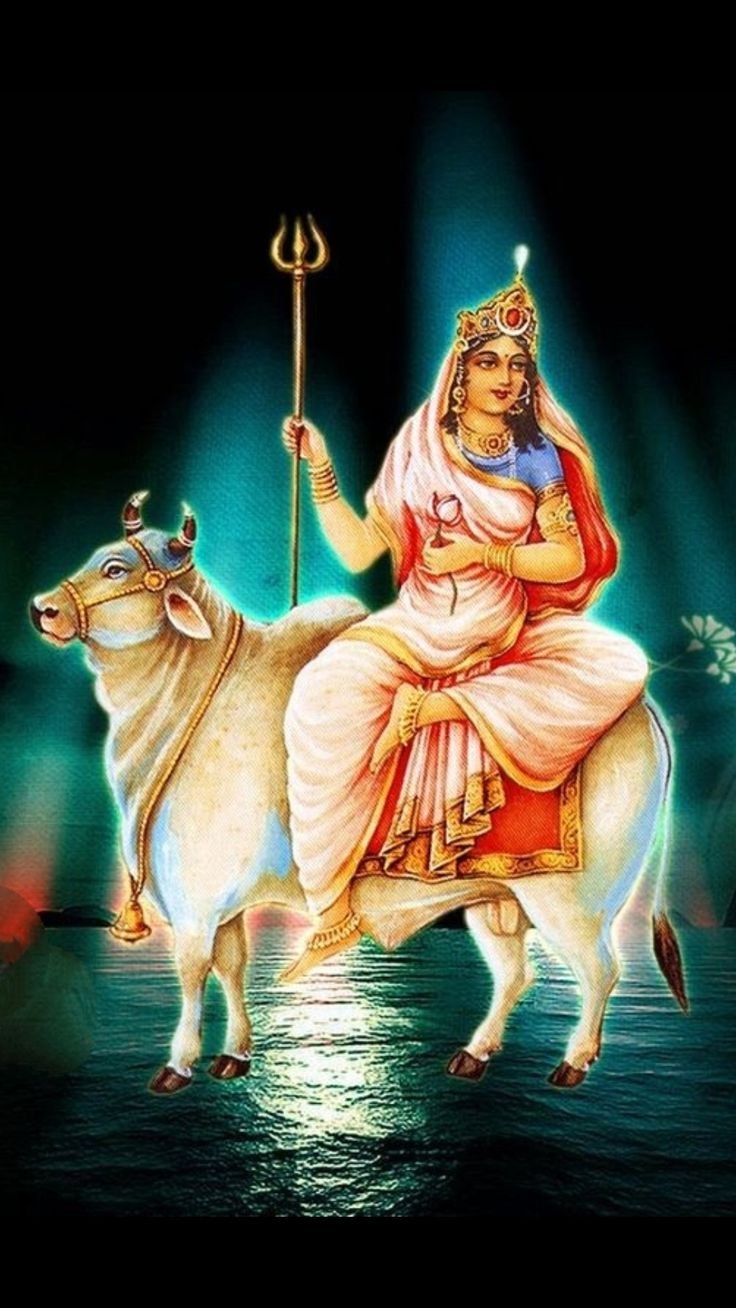
In her form as Shailaputri, Maa Durga is depicted riding a bull (Nandi), symbolizing steadfastness, patience, and self-control. She holds a trident (Trishul), symbolizing the trinity of creation, preservation, and destruction, and a lotus, representing spirituality and divine wisdom. She is also often depicted with a moon on her forehead, symbolizing her connection to the divine and cosmic rhythm.
Mythological Significance of Shailaputri Avatar
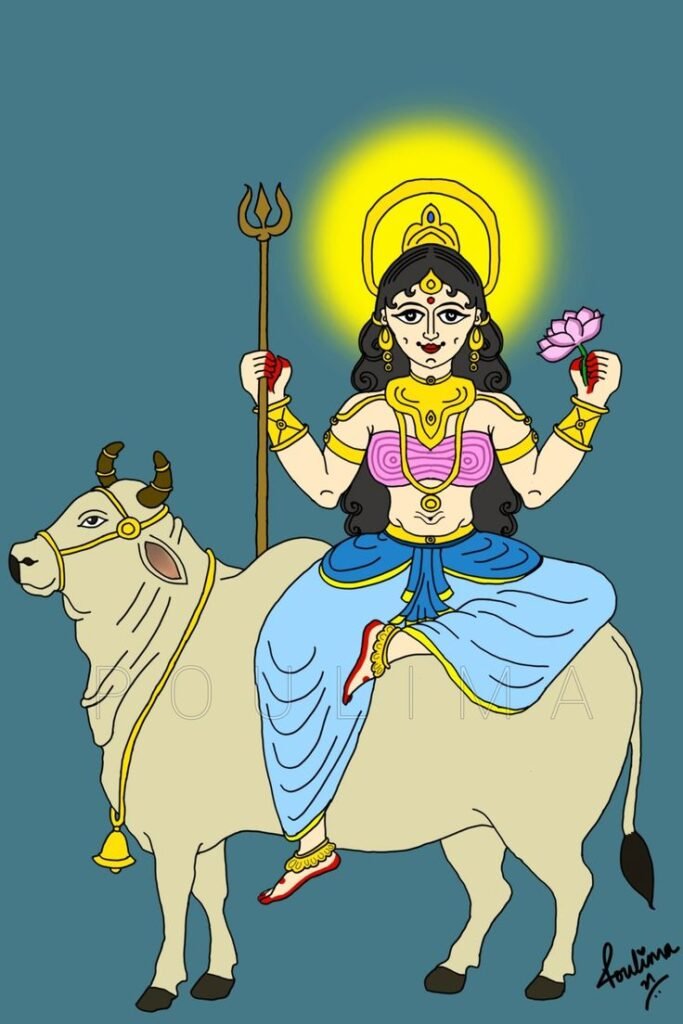
The mythological origin of Shailaputri is deeply tied to the story of Maa Parvati and her marriage to Lord Shiva.
Birth and Connection to the Himalayas:
- Maa Shailaputri is the daughter of Himalaya, the king of mountains, and Mena, his queen. She is considered to be the incarnation of Adi Shakti (the primal power) and was born to protect the world and help in the establishment of righteousness.
- As the daughter of the Himalayas, she embodies the strength and steadfastness of the mountains, which are unyielding and unshakable. The Himalayas are revered as the abode of the gods, and Shailaputri’s birth signifies the divine connection between the physical and spiritual realms.
Her Role as the Goddess of Purity and Strength:
- Shailaputri’s significance is also linked to her embodiment of purity and spiritual strength. She represents the pure energy that drives the universe and the transformative power that clears obstacles from the path of righteousness.
- As Maa Shailaputri, she is often seen as the personification of dharma, discipline, and devotion. Her presence in the Navaratri celebrations emphasizes the importance of beginning one’s spiritual journey with purity of heart, faith, and devotion.
Maa Shailaputri and Lord Shiva:
It is believed that Shailaputri’s worship helps devotees begin their journey towards self-realization and spiritual awakening, just as Parvati’s devotion to Lord Shiva ultimately led to the union of the divine couple.
Shailaputri is also connected to the story of Maa Parvati, the form of Shakti who later becomes the wife of Lord Shiva. As Parvati, she seeks to unite with Shiva, and this journey begins with her incarnation as Shailaputri. Her devotion to Lord Shiva, even in her earlier life as Shailaputri, is a symbolic representation of pure devotion and the pursuit of truth.
Symbolism of Shailaputri Avatar
The symbolism of Shailaputri is rich and multilayered, representing various aspects of divine energy, strength, and spiritual guidance.
The Bull (Nandi):
- Nandi, the sacred bull, is a prominent part of Shailaputri’s depiction. Nandi is the vehicle of Lord Shiva, and in this avatar, he represents steadfastness, patience, and faithfulness. The bull symbolizes strength and endurance, qualities that Maa Shailaputri embodies in her fight against the forces of evil.
- The bull also represents the balance of physical and spiritual strength, suggesting that one must maintain harmony between the material and spiritual realms to achieve true success.
The Trishul (Trident):
The trishul also symbolizes the three gunas (qualities) of nature: Sattva (goodness), Rajas (activity), and Tamas (inertia), showing that Maa Shailaputri controls and transcends these forces.
The Trishul held by Maa Shailaputri is one of her most iconic attributes. It symbolizes the three fundamental aspects of existence: creation, preservation, and destruction. This also signifies Maa Shailaputri’s power to govern the universe and its cycles, maintaining the balance between life and death, good and evil.
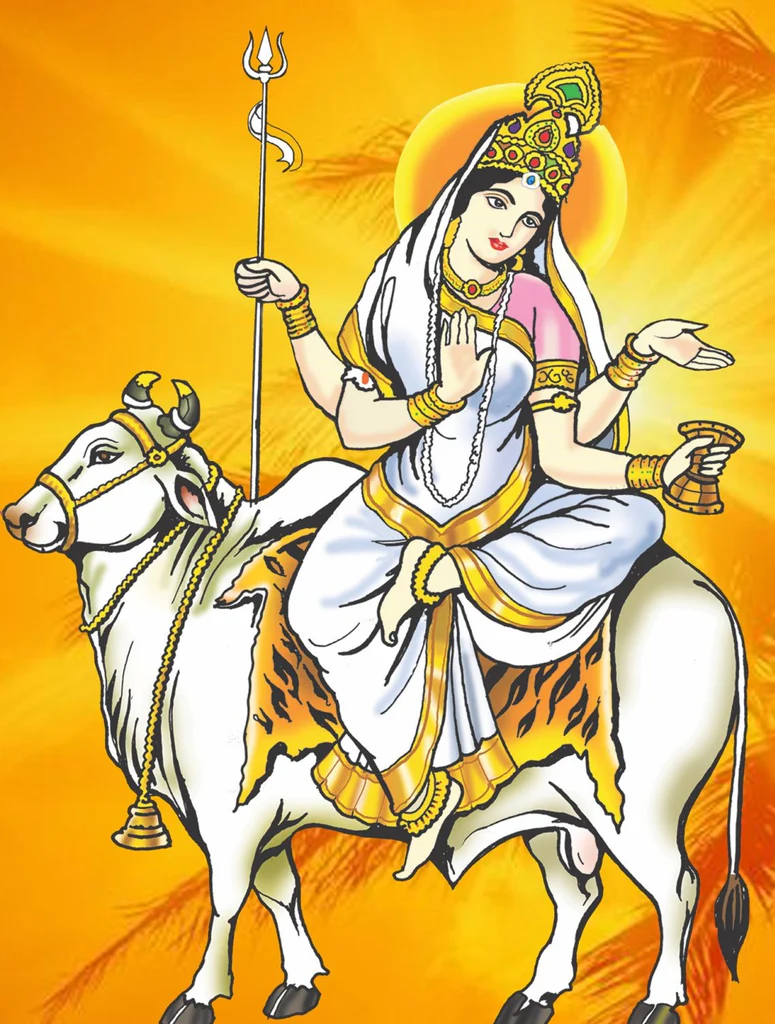
Worship of Shailaputri Avatar of Maa Shakti
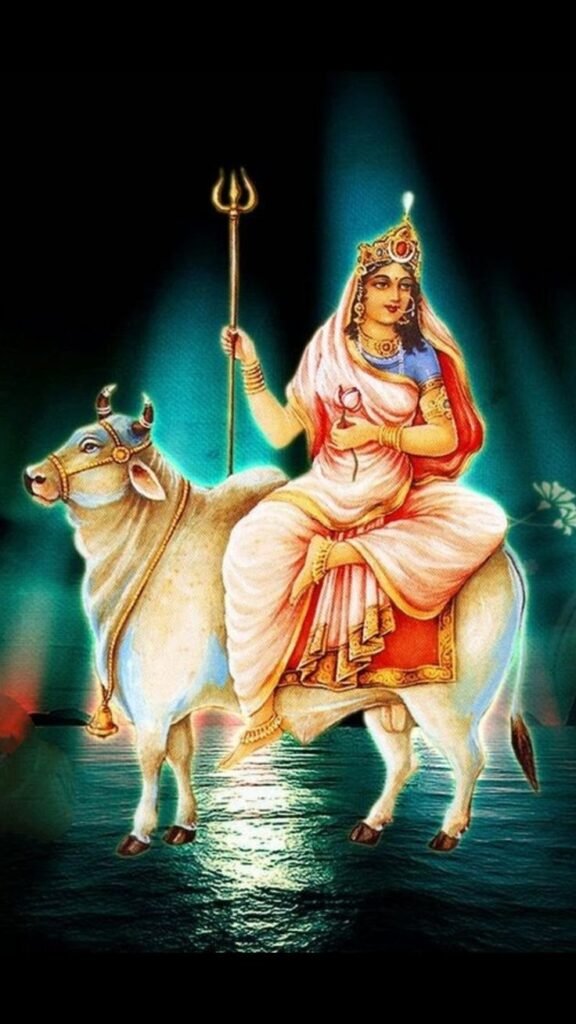
Worshiping Maa Shailaputri is considered auspicious on the first day of Navaratri, which marks the beginning of the nine-day festival dedicated to Maa Durga. Devotees who worship Maa Shailaputri seek her blessings for spiritual growth, purity, and inner strength. Her worship helps one to overcome obstacles, purify the mind, and start their spiritual journey with a strong foundation.
Devotional Practices:
- Chanting of Mantras: Devotees recite specific mantras dedicated to Maa Shailaputri to invoke her divine blessings. The Shailaputri Mantra is believed to bring peace, remove obstacles, and grant spiritual strength.
- Fasting and Puja: Devotees observe fasting and perform pujas in her honor. Offerings of flowers, fruits, and milk are made, symbolizing purity and devotion. Hymns and prayers are recited to seek her protection and grace.
Shailaputri’s Blessings:
Worship of Maa Shailaputri is believed to purify the soul, remove obstacles from one’s path, and provide strength to endure hardships. Spiritual seekers who worship Shailaputri often feel empowered to face challenges in life with resilience and steadfast faith.
Mantras of the Divine Avatar
ॐ शैलपुत्री महादेवि,
देव्या शक्ति महात्मनी।
नमः शम्भवे देवी,
शान्ति शांति शांति॥
Om, Shailaputri Mahadevi,
Divine Power, the Great One.
Salutations to the Goddess Shambhavi,
May peace prevail, peace prevail, peace prevail.
Aarti of the Divine Avatar
ॐ जय शैलपुत्री महादेवी,
शांति प्रदान करने वाली।
नन्दिनी पतिव्रता भवानी,
सभी बुराईयों को दूर करने वाली।
जय माता शैलपुत्री, जय माता शैलपुत्री॥

